
Info
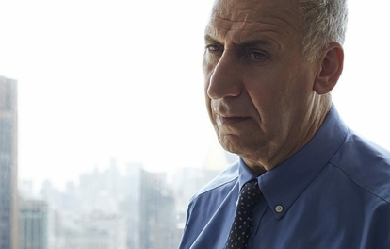
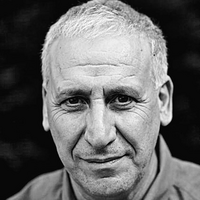
Edward Hirsch (born January 20, 1950) is an American poet and critic who wrote a national bestseller about reading poetry. He has published nine books of poems, including The Living Fire: New and Selected Poems (2010), which brings together thirty-five years of work, and Gabriel: A Poem (2014), a book-length elegy for his son that The New Yorker calls “a masterpiece of sorrow.” He has also published five prose books about poetry. He is president of the John Simon Guggenheim Memorial Foundation in New York City (not to be mistaken with E.D. Hirsch, Jr.). Life Hirsch was born in Chicago. He had a childhood involvement with poetry, which he later explored at Grinnell College and the University of Pennsylvania, where he received a Ph.D. in folklore. Hirsch was a professor of English at Wayne State University. In 1985, he joined the faculty at the University of Houston, where he spent 17 years as a professor in the Creative Writing Program and Department of English. He was appointed the fourth president of the John Simon Guggenheim Foundation on September 3, 2002. He holds seven honorary degrees. Career Hirsch is a well-known advocate for poetry whose essays have been published in the American Poetry Review, The New York Times Book Review, The New York Review of Books, and elsewhere. He wrote a weekly column on poetry for The Washington Post Book World from 2002-2005, which resulted in his book Poet’s Choice (2006). His other prose books include Responsive Reading (1999), The Demon and the Angel: Searching for the Source of Artistic Inspiration (2002), and A Poet’s Glossary (2014), a complete compendium of poetic terms. He is the editor of Transforming Vision: Writers on Art (1994), Theodore Roethke’s Selected Poems (2005) and To a Nightingale (2007). He is the co-editor of A William Maxwell Portrait: Memories and Appreciations and The Making of a Sonnet: A Norton Anthology (2008). He also edits the series “The Writer’s World” (Trinity University Press). Hirsch’s first collection of poems, For the Sleepwalkers, received the Lavan Younger Poets Award from the Academy of American Poets and the Delmore Schwartz Memorial Award from New York University. His second book, Wild Gratitude, received the National Book Critics Circle Award in 1986. He was awarded a Guggenheim Fellowship in 1985 and a five-year MacArthur Fellowship in 1997. He received the William Riley Parker Prize from the Modern Language Association for the best scholarly essay in PMLA for the year 1991. He has also received an Ingram Merrill Foundation Award, a National Endowment for the Arts Fellowship, the Rome Prize from the American Academy in Rome, a Pablo Neruda Presidential Medal of Honor, and the American Academy of Arts and Letters Award for Literature. He is a former Chancellor of the Academy of American Poets. Hirsch’s book, How to Read a Poem and Fall in Love with Poetry (1999), was a surprise bestseller and is widely taught throughout the country. Works Poetry collections * For the Sleepwalkers, (New York: Alfred A. Knopf, 1981) * Wild Gratitude, (New York: Alfred A. Knopf, 1986) * The Night Parade, (New York: Alfred A. Knopf, 1989) * Earthly Measures, (New York: Alfred A. Knopf, 1994) ISBN 0-679-76566-2 * On Love, (New York: Alfred A. Knopf, 1998) * Lay Back the Darkness (New York: Alfred A. Knopf, 2003) ISBN 0-375-41521-1 * Special Orders (New York: Alfred A. Knopf, 2008) ISBN 0-307-26681-8 * Gabriel A Poem (New York: Alfred A. Knopf, 2014) ISBN 978-0-385-35357-1 Non-fiction books * Transforming Vision: Writers on Art, Selected and Introduced by Edward Hirsch, (Boston: Little, Brown, 1994) ISBN 0-8212-2126-4 * How to Read a Poem and Fall in Love with Poetry, (New York: Harcourt Brace, 1999) ISBN 0-15-100419-6 * Responsive Reading, (1999) * 'Introduction’ in John Keats, Complete Poems and Selected Letters of John Keats, (New York: Modern Library, 2001) ISBN 0-375-75669-8 * The Demon and the Angel: Searching for the Source of Artistic Expression, (New York: Harcourt Brace, 2002) * Poet’s Choice, (New York: Harcourt, 2006) ISBN 0-15-101356-X * A Poet’s Glossary, (Boston & New York: Houghton Mifflin Harcourt, 2014) ISBN 978-0-15-101195-7 Editor * Transforming Vision: Writers on Art, (The Art Institute of Chicago/ Bulfinch Press, 1994) ISBN 978-0821221266 * A William Maxwell Portrait, (Norton, 2004) ISBN 978-0393057713 * Theodore Roethke: Selected Poems, (The Library of America, 2005) ISBN 978-1931082785 * Irish Writers on Writing, edited with Eavan Boland, (Trinity University Press, 2007) ISBN 9781595340320 * Polish Writers on Writing, edited with Adam Zagajewski, (Trinity University Press, 2007) ISBN 9781595340337 * To a Nightingale: Poems from Sappho to Borges, (Braziller, 2007) ISBN 978-0807616277 * The Making of a Sonnet, (Norton, 2008) ISBN 978-0393333534 * Hebrew Writers on Writing, edited with Peter Cole (Trinity University Press, 2008) ISBN 9781595340528 * Nineteenth-Century American Writers on Writing, edited with Brenda Wineapple (Trinity University Press, 2010) ISBN 9781595340696 * Chinese Writers on Writing, edited with Arthur Sze (Trinity University Press, 2010) ISBN 9781595340634 * Romanian Writers on Writing, edited with Norman Manea, (Trinity University Press, 2011) ISBN 9781595340825 References Wikipedia—https://en.wikipedia.org/wiki/Edward_Hirsch
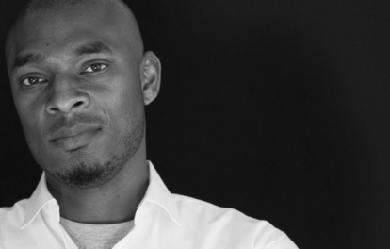
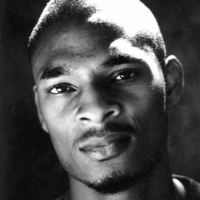
Terrance Hayes (born November 18, 1971) is an American poet and educator who has published five poetry collections. His 2010 collection, Lighthead, won the National Book Award for Poetry in 2010. In September 2014, he was one of 21 recipients of the prestigious MacArthur fellowships awarded to individuals who show outstanding creativity in their work. Life and education Hayes was born in Columbia, South Carolina. He received a B.A. from Coker College and an M.F.A. from the University of Pittsburgh writing program. He was a Professor of Creative Writing at Carnegie Mellon University until 2013, at which time he joined the faculty at the English Department at the University of Pittsburgh. He lives in Pittsburgh with his wife, the poet Yona Harvey, who also serves as a professor at the University of Pittsburgh, and their children. Works * Hayes first book of poetry, Muscular Music (1999), won both a Whiting Award and the Kate Tufts Discovery Award. His second collection, Hip Logic (2002), won the National Poetry Series, was a finalist for the Los Angeles Times Book Award, and runner-up for the James Laughlin Award from the Academy of American Poets. He won the National Book Award for Lighthead. * Hayes poems have appeared in literary journals and magazines including The New Yorker, The American Poetry Review, Ploughshares, Fence, The Kenyon Review, Jubilat Harvard Review, West Branch, Poetry, and The Adroit Journal’. * In praising Hayes’s work, Cornelius Eady has said: “First you’ll marvel at his skill, his near-perfect pitch, his disarming humor, his brilliant turns of phrase. Then you’ll notice the grace, the tenderness, the unblinking truth-telling just beneath his lines, the open and generous way he takes in our world.” * In September 2014, he was honored as one of the 21 2014 fellows of the John D. and Catherine T. MacArthur Foundation. The fellowship comes with a $625,000 stipend over five years and is one of the most prestigious prizes that is awarded for artists, scholars and professionals. * In January 2017, Hayes was elected a Chancellor of the Academy of American Poets. Awards * * 2014 MacArthur Foundation Fellow * 2011 United States Artists Zell Fellow for Literature * 2010 National Book Award for Poetry, for Lighthead * Pushcart Prize, a Best American Poetry 2005 selection * National Endowment for the Arts Fellowship * 2009 Guggenheim Fellowship * James Laughlin Award runner-up, from the Academy of American Poets * Kate Tufts Discovery Award for Muscular Music (1999) * 2001 National Poetry Series, for Hip Logic * 1999 Whiting Award Poetry collections * * How to Be Drawn (Penguin Books, 2015) * Lighthead (Penguin Books, 2010)—winner of the National Book Award * Wind in a Box. Penguin Books. 2006. ISBN 9781440626982. * Hip Logic. Penguin Books. 2002. ISBN 978-0-14-200139-4. * Muscular Music (Tia Chucha Press, 1999; reissued by Carnegie Mellon University Press, 2006) References Wikipedia—https://en.wikipedia.org/wiki/Terrance_Hayes

Hey! I went through a stage where poetry was an everyday thing for me and I thought I may as well share it instead of filling my book with it.... I don't write as often anymore but would love to start it up again and need some inspiration. I'm a fantasy writer, those of you who have read my poetry so far may notice a lot of it is more horror wirting then nice poetry.. I was in a dark place when I started writing and it helped to express my feelings on paper instead of taking it out on others and dragging myself down, it helped me get through that tough time and back onto my feet so I really do LOVE poetry :) Majority of my poetry is made up, for example, I have never been to the snow.... But I enjoy the fantasy of it of writing whatever you like. The rest of my poems though, are real and based on real life events and I will more than likely note that on my poems. Thank you for taking the time to read this through, enjoy my poetry and feedback is appreciated! :) Cheeers mate!
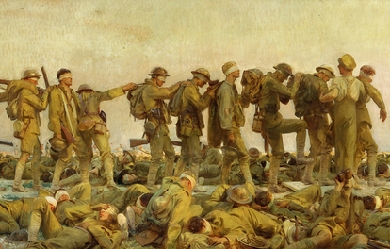
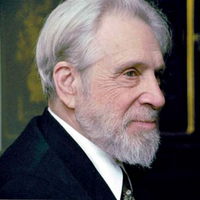
Anthony Evan Hecht (January 16, 1923– October 20, 2004) was an American poet. His work combined a deep interest in form with a passionate desire to confront the horrors of 20th century history, with the Second World War, in which he fought, and the Holocaust being recurrent themes in his work. Biography Early years Hecht was born in New York City to German-Jewish parents. He was educated at various schools in the city– he was a classmate of Jack Kerouac at Horace Mann School– but showed no great academic ability, something he would later refer to as “conspicuous.” However, as a freshman English student at Bard College in New York he discovered the works of Stevens, Auden, Eliot, and Dylan Thomas. It was at this point that he decided he would become a poet. Hecht’s parents were not happy at his plans and tried to discourage them, even getting family friend Ted Geisel, better known as Dr. Seuss, to attempt to dissuade him. In 1944, upon completing his final year at Bard, Hecht was drafted into the 97th Infantry Division and was sent to the battlefields in Europe. He saw combat in Germany in the “Ruhr Pocket” and in Cheb in Czechoslovakia. However, his most significant experience occurred on April 23, 1945 when Hecht’s division helped liberate Flossenbürg concentration camp. Hecht was ordered to interview French prisoners in the hope of gathering evidence on the camp’s commanders. Years later, Hecht said of this experience, The place, the suffering, the prisoners’ accounts were beyond comprehension. For years after I would wake shrieking. Career After the war ended, Hecht was sent to Japan, where he became a staff writer with Stars and Stripes. He returned to the US in March 1946 and immediately took advantage of the G.I. bill to study under the poet-critic John Crowe Ransom at Kenyon College, Ohio. Here he came into contact with fellow poets such as Randall Jarrell, Elizabeth Bishop, and Allen Tate. He later received his master’s degree from Columbia University. In 1947 Hecht attended the University of Iowa and taught in the Iowa Writers’ Workshop, together with writer Robie Macauley, with whom Hecht had served during World War II, but, suffering from post-traumatic stress disorder after his war service, gave it up swiftly to enter psychoanalysis. Hecht released his first collection, A Summoning of Stones, in 1954. In this work his mastery of a wide range of poetic forms were clear as was his awareness of the forces of history, which he had seen first hand. Even at this stage Hecht’s poetry was often compared with that of Auden, with whom Hecht had become friends in 1951 during a holiday on the Italian island of Ischia, where Auden spent each summer. In 1993 Hecht published The Hidden Law, a critical reading of Auden’s body of work. During his career Hecht won many fans, and prizes, including the Rome Prize in 1951 and the 1968 Pulitzer Prize for Poetry for his second work The Hard Hours. It was within this volume that Hecht first addressed his own experiences of World War II - memories that had caused him to have a nervous breakdown in 1959. Hecht spent three months in hospital following his breakdown, although he was spared electric shock therapy, unlike Sylvia Plath, whom he had encountered while teaching at Smith College. Hecht’s main source of income was as a teacher of poetry, most notably at the University of Rochester, where he taught from 1967 to 1985. He also spent varying lengths of time teaching at other notable institutions such as Smith, Bard, Harvard, Georgetown, and Yale. Between 1982 and 1984, he held the esteemed position of Poet Laureate Consultant in Poetry to the Library of Congress. Hecht won a number of notable literary awards including: the 1968 Pulitzer Prize for Poetry (for the volume The Hard Hours), the 1983 Bollingen Prize, the 1988 Ruth Lilly Poetry Prize, the 1989 Aiken Taylor Award for Modern American Poetry, the 1997 Wallace Stevens Award, the 1999/2000 Frost Medal, and the Tanning Prize. Hecht died October 20, 2004, at his home in Washington, D. C.; he is buried at the cemetery at Bard College. One month later, on November 17, Hecht was awarded the National Medal of Arts, accepted on his behalf by his wife, Helen Hecht. The Anthony Hecht prize is awarded annually by the Waywiser press. Bibliography * Poetry * A Summoning of Stones (1954) * The Hard Hours (1967) * Millions of Strange Shadows (1977) * The Venetian Vespers (1979) * The Transparent Man (1990) * Flight Among the Tombs (1998) * The Darkness and the Light (2001) * Translations * Aeschylus’s Seven Against Thebes (1973) (with Helen Bacon) * Other Works * Obbligati: Essays in Criticism (1986) * The Hidden Law: The Poetry of W. H. Auden (1993) * On the Laws of the Poetic Art (1995) * Melodies Unheard: Essays on the Mysteries of Poetry (Johns Hopkins University Press) (2003) References Wikipedia—https://en.wikipedia.org/wiki/Anthony_Hecht
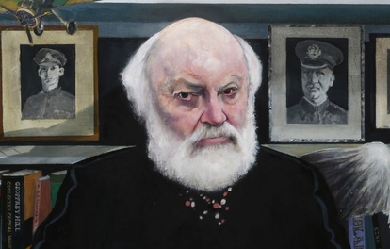

Sir Geoffrey William Hill, FRSL (18 June 1932– 30 June 2016) was an English poet, professor emeritus of English literature and religion, and former co-director of the Editorial Institute, at Boston University. Hill has been considered to be among the most distinguished poets of his generation and was called the “greatest living poet in the English language.” From 2010 to 2015 he held the position of Professor of Poetry in the University of Oxford. Following his receiving the Truman Capote Award for Literary Criticism in 2009 for his Collected Critical Writings, and the publication of Broken Hierarchies (Poems 1952–2012), Hill is recognised as one of the principal contributors to poetry in the twentieth and twenty-first centuries. Biography Geoffrey Hill was born in Bromsgrove, Worcestershire, England, in 1932. When he was six, his family moved to nearby Fairfield in Worcestershire, where he attended the local primary school, then the grammar school in Bromsgrove. “As an only child, he developed the habit of going for long walks alone, as an adolescent deliberating and composing poems as he muttered to the stones and trees.” On these walks he often carried with him Oscar Williams’ A Little Treasury of Modern Poetry (1946), and Hill speculates: “there was probably a time when I knew every poem in that anthology by heart.” In 1950 he was admitted to Keble College, Oxford to read English, where he published his first poems in 1952, at the age of twenty, in an eponymous Fantasy Press volume (though he had published work in the Oxford Guardian—the magazine of the University Liberal Club—and The Isis). Upon graduation from Oxford with a First, Hill embarked on an academic career, teaching at the University of Leeds from 1954 until 1980, from 1976 as professor of English Literature. After leaving Leeds, he spent a year at the University of Bristol on a Churchill Scholarship before becoming a teaching fellow at Emmanuel College, Cambridge, where he taught from 1981 until 1988. He then moved to the United States, to serve as University Professor and Professor of Literature and Religion at Boston University. In 2006, he moved back to Cambridge, England. Hill was married twice. His first marriage to Nancy Whittaker, which produced four children, Julian, Andrew, Jeremy and Bethany, ended in divorce. His second marriage to the American poet, and later Anglican priest, Alice Goodman occurred in 1987. The couple had a daughter, Alberta. The marriage lasted until Hill’s death. Awards and honours Mercian Hymns won the Alice Hunt Bartlett Prize and the inaugural Whitbread Award for Poetry in 1971. Hill won as well the Eric Gregory Award in 1961. Hill was awarded an honorary D.Litt. degree by the University of Leeds in 1988, the same year he received an Ingram Merrill Foundation Award. Hill was also an Honorary Fellow of Keble College, Oxford; an Honorary Fellow of Emmanuel College, Cambridge; a Fellow of the Royal Society of Literature; and a Fellow of the American Academy of Arts and Sciences. In 2009 his Collected Critical Writings won the Truman Capote Award for Literary Criticism, the largest annual cash prize in English-language literary criticism. Hill was created a Knight Bachelor in the 2012 New Year Honours for services to literature. Oxford candidacy In March 2010 Hill was confirmed as a candidate in the election of the Professor of Poetry in the University of Oxford, with a broad base of academic support. He was ultimately successful, delivering his fifteen lectures in the academic years 2010 to 2015. The lectures progressed chronologically, beginning with Shakespeare’s Sonnets and concluding with a critique of Philip Larkin’s poem “Church Going”. Writing Hill’s poetry encompasses a variety of styles, from the dense and allusive writing of King Log (1968) and Canaan (1997) to the simplified syntax of the sequence 'The Pentecost Castle’ in Tenebrae (1978) to the more accessible poems of Mercian Hymns (1971), a series of thirty poems (sometimes called 'prose-poems’ a label which Hill rejects in favour of 'versets’) which juxtapose the history of Offa, eighth-century ruler of the Anglo-Saxon kingdom of Mercia, with Hill’s own childhood in the modern Mercia of the West Midlands. Seamus Heaney said of Hill, 'He has a strong sense of the importance of the maintenance of speech, a deep scholarly sense of the religious and political underpinning of everything in Britain’. Kenneth Haynes editor, of Broken Hierarchies, commented 'the annotation is not the hard part with Hill’s poems... the difficulty only begins after looking things up’. Elegy is Hill’s dominant mode; he is a poet of phrases rather than cadences. Regarding both his style and subject, Hill is often described as a “difficult” poet. In an interview in The Paris Review (2000), which published Hill’s early poem “Genesis” when he was still at Oxford, Hill defended the right of poets to difficulty as a form of resistance to the demeaning simplifications imposed by 'maestros of the world’. Hill also argued that to be difficult is to be democratic, equating the demand for simplicity with the demands of tyrants. He makes circumspect use of traditional rhetoric (as well as that of modernism), but he also transcribes the idioms of public life, such as those of television, political sloganeering, and punditry. Hill has been consistently drawn to morally problematic and violent episodes in British and European history and has written poetic responses to the Holocaust in English, “Two Formal Elegies”, “September Song” and “Ovid in the Third Reich”. His accounts of landscape (especially that of his native Worcestershire) are as intense as his encounters with history.Hill has also worked in theatre - in 1978, the National Theatre in London staged his 'version for the English stage’ of Brand by Henrik Ibsen, written in rhyming verse.Hill’s distaste for conclusion, however, has led him, in 2000's Speech! Speech! (118), to scorn the following argument as a glib get-out: 'ACCESSIBLE / traded as DEMOCRATIC, he answers / as he answers móst things these days | easily.' Throughout his corpus Hill is uncomfortable with the muffling of truth-telling that verse designed to sound well, for its contrivances of harmony, must permit. The constant buffets of Hill’s suspicion of lyric eloquence—can it truly be eloquent?—against his talent for it (in Syon, a sky is 'livid with unshed snow’) become in the poems a sort of battle in style, where passages of singing force (ToL: 'The ferns / are breast-high, head-high, the days / lustrous, with their hinterlands of thunder’) are balanced with prosaic ones of academese and inscrutable syntax. In the long interview collected in Haffenden’s Viewpoints there is described the poet warring himself to witness honestly, to make language as tool say truly what he believes is true of the world. Criticism The violence of Hill’s aesthetic has been criticised by the Irish poet-critic Tom Paulin, who draws attention to the poet’s use of the Virgilian trope of 'rivers of blood’– as deployed infamously by Enoch Powell– to suggest that despite Hill’s multi-layered irony and techniques of reflection, his lyrics draw their energies from an outmoded nationalism, expressed in what Hugh Haughton has described as a 'language of the past largely invented by the Victorians’. Yet as Raphael Ingelbien notes, 'Hill’s England... is a landscape which is fraught with the traces of a history that stretches so far back that it relativizes the Empire and its aftermath’. Harold Bloom has called him ‘the strongest British poet now active.’ * For his part, Hill addressed some of the misperceptions about his political and cultural beliefs in a Guardian interview in 2002. There he suggested that his affection for the “radical Tories” of the 19th century, while recently misunderstood as reactionary, was actually evidence of a progressive bent tracing back to his working class roots. He also indicated that he could no longer draw a firm distinction between “Blairite Labour” and the Thatcher-era Conservatives, lamenting that both parties had become solely oriented toward “materialism”. * Hill’s style has also been subject to parody: Wendy Cope includes a two-stanza parody of the Mercian Hymns entitled “Duffa Rex” in Making Cocoa for Kingsley Amis. Bibliography Poetry collections * For the Unfallen (1959) * Preghiere (1964) * King Log (1968) * Mercian Hymns (1971) * Somewhere Is Such a Kingdom: Poems 1952-1971 (1975) * Tenebrae (1978) * The Mystery of the Charity of Charles Péguy (1983) * New & Collected Poems, 1952-1992. Houghton Mifflin Harcourt. January 2000. ISBN 0-618-00188-3. * Canaan. Houghton Mifflin Harcourt. 1998. ISBN 0-395-92486-3. * The Triumph of Love. Houghton Mifflin Harcourt. 15 December 1999. ISBN 0-618-00183-2. * Speech! Speech! (2000) - long poem, comprising 120 12-line stanzas * The Orchards of Syon (2002) * Scenes from Comus (2005) * A Treatise of Civil Power. Yale University Press. 2007. ISBN 978-0-300-13149-9. * Without Title Yale University Press. 2006, ISBN 978-0-300-12176-6. * Selected Poems. Yale University Press. 1 April 2010. ISBN 978-0-300-16430-5. * A Treatise of Civil Power (Penguin, 2007) * Oraclau | Oracles (Clutag Press, 2010) * Clavics (Enitharmon Press, 2011) * Odi Barbare (Clutag Press, 2012) * Broken Hierarchies: Poems 1952-2012. OUP Oxford. November 2013. ISBN 978-0-19-960589-7. Essay collections * The Lords of Limit (1984) * The Enemy’s Country (1991) * Style and Faith (2003) * Collected Critical Writings (2008) References Wikipedia—https://en.wikipedia.org/wiki/Geoffrey_Hill
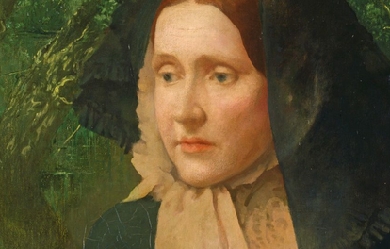
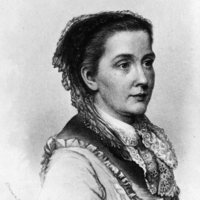
Julia Ward Howe (/haʊ/; May 27, 1819– October 17, 1910) was an American poet and author, best known for writing “The Battle Hymn of the Republic”. She was also an advocate for abolitionism and was a social activist, particularly for women’s suffrage. Personal life Early life Howe was born in New York City. She was the fourth of seven children born to an upper middle class couple. Her father Samuel Ward III was a Wall Street stockbroker, well-to-do banker, and strict Calvinist. Her mother was the occasional poet Julia Rush Cutler, related to Francis Marion, the “Swamp Fox” of the American Revolution. She died of tuberculosis when her daughter was five years old. She was educated by private tutors and in schools for young ladies until she was sixteen. Her eldest brother Samuel Cutler Ward travelled in Europe and brought home a private library. She had access to these modern works, many contradicting the Calvinistic world view presented by her father. She became well read and intelligent, though as much a social butterfly as she was a scholar. She was brought into contact with some of the greatest minds of her time because of her father’s status as a successful banker. She interacted with Charles Dickens, Charles Sumner, and Margaret Fuller. Sam married into the prominent Astor family, allowing him great social freedom that he shared with his sister. The siblings were cast into mourning time when their father died in 1839; shortly afterwards, brother Henry died, then Samuel’s wife Emily died, along with their newborn child. Marriage and children Julia was visiting Boston in 1841 when she met Samuel Gridley Howe (1801—1876), a physician and reformer who founded the Perkins School for the Blind. They announced their engagement quite suddenly on February 21. Howe had courted her for a time, but he had more recently shown an interest in her sister Louisa. In 1843, they married despite their eighteen-year age difference. She gave birth to their first child while honeymooning in Europe, eleven months later. She bore their last child in 1858 at the age of forty. They had six children: Julia Romana Howe (1844–1886), Florence Marion Howe (1845–1922), Henry Marion Howe (1848–1922), Laura Elizabeth Howe (1850–1943), Maud Howe (1855–1948), and Samuel Gridley Howe, Jr. (1858–1863). Julia was likewise an aunt of novelist Francis Marion Crawford. Howe lived and raised her children in South Boston, while her husband pursued his advocacy work. She hid her unhappiness with their marriage behind a cheerful demeanor and singing at parties, earning the nickname “the family champagne” from her children. She made frequent visits to Gardiner, Maine where she stayed at “The Yellow House,” a home built originally in 1814 and later home to her daughter Laura. Writing She was unhappy with her surroundings, so she took lectures, and studied foreign languages, and wrote plays and dramas. Julia had published essays on Goethe, Schiller and Lamartine before her marriage to Howe, in the New York Review and Theological Review. Her book Passion-Flowers was published in December 1853. The book collected intensely personal poems and was written without the awareness of her husband, who was then editing the Free Soil newspaper The Commonwealth. Her second anonymous collection, Words for the Hour, appeared in 1857. She went on to write plays such as Leonora, The World’s Own, and Hippolytus. These works all contained allusions to her stultifying marriage. She went on many trips, several for missions. In 1860, she published a book, A Trip to Cuba, which told of an 1859 trip she had taken. It had generated outrage from William Lloyd Garrison, an abolitionist, for its derogatory view of Blacks. (Julia had only recently become an abolitionist in the 1850s, her family believing it to be a social evil. She thus believed it was morally right to free the slaves but did not believe in social or racial equality.) Several letters on High Newport society were published in the New York Tribune in 1860, as well. Howe’s being a published author troubled her husband greatly, especially due to the fact that her poems many times had to do with critiques of women’s roles as wives, her own marriage, and women’s place in society. Their marriage problems escalated to the point where they separated in 1852. Samuel, when he became her husband, had also taken complete control of her estate income. Upon her husband’s death in 1876, she had found that through a series of bad investments that most of her money had been spent. Howe’s writing and social activism were greatly shaped by her upbringing and married life. Much study has gone into her difficult marriage and how it influenced her work, both written and active. Social activism She was inspired to write “The Battle Hymn of the Republic” after she and her husband visited Washington, D.C., and met Abraham Lincoln at the White House in November 1861. During the trip, her friend James Freeman Clarke suggested she write new words to the song “John Brown’s Body”, which she did on November 19. The song was set to William Steffe’s already-existing music and Howe’s version was first published in the Atlantic Monthly in February 1862. It quickly became one of the most popular songs of the Union during the American Civil War. Now that Howe was in the public eye, she produced eleven issues of the literary magazine, Northern Lights, in 1867. That same year she wrote about her travels to Europe in From the Oak to the Olive. After the war she focused her activities on the causes of pacifism and women’s suffrage. By 1868, Julia’s husband no longer opposed her involvement in public life, so Julia decided to become active in reform. She helped found the New England Women’s Club and the New England Woman Suffrage Association. She served as president for nine years beginning in 1868. In 1869, she became co-leader with Lucy Stone of the American Woman Suffrage Association. Then, in 1870, she became president of the New England Women’s Club. After her husband’s death in 1876, she focused more on her interests in reform. She was the founder and from 1876 to 1897 president of the Association of American Women, which advocated for women’s education. She also served as president of organizations like the Massachusetts Woman Suffrage Association and the New England Suffrage Association. In 1870 she founded the weekly Woman’s Journal, a suffragist magazine which was widely read. She contributed to it for twenty years. That same year, she wrote her “Appeal to womanhood throughout the world”, later known as the Mother’s Day Proclamation. It asked women from the world to join for world peace. (See Category:Pacifist feminism.) In 1872, she asked that “Mother’s Day” be celebrated on the 2nd of June. Her efforts were not successful, and by 1893 she was wondering if the 4th of July could be remade into “Mother’s Day”. In 1874, she edited a coeducational defense titled Sex and Education. She wrote a collection about the places she lived in 1880 called Modern Society. In 1883, Howe published a biography of Margaret Fuller. Then, in 1885 she published another collection of lectures called Is Polite Society Polite? ("Polite society" is a euphemism for the upper class.) Finally in 1899 she published her popular memoirs, Reminiscences. She continued to write until her death. In 1881, Howe was elected president of the Association for the Advancement of Women. Around the same time, Howe went on a speaking tour of the Pacific coast, and founded the Century Club of San Francisco. In 1890, she helped found the General Federation of Women’s Clubs, to reaffirm the Christian values of frugality and moderation. From 1891-1893, she served as president for the second time of the Massachusetts Woman Suffrage Association. Until her death, she was president of the New England Woman Suffrage Association. From 1893 to 1898 she directed the General Federation of Women’s Clubs, and headed the Massachusetts Federation of Women’s Clubs. In 1908 Julia was the first woman to be elected to the American Academy of Arts and Letters, a society; its goal is to “foster, assist, and sustain excellence” in American literature, music, and art. Death Howe’s accomplishments mostly reside in her contribution to women’s rights. She laid the foundation for women’s rights groups both in her own home and in the public eye. Howe died of pneumonia October 17, 1910, at her home, Oak Glen, in Portsmouth, Rhode Island at the age of 91. She is buried in the Mount Auburn Cemetery in Cambridge, Massachusetts. At her memorial service approximately 4,000 individuals sang “Battle Hymn of the Republic” as a sign of respect as it was the custom to sing that song at each of Julia’s speaking engagements. After her death, her children collaborated on a biography, published in 1916. It won the Pulitzer Prize for Biography. Honors On January 28, 1908, at age 88, Howe became the first woman elected to the American Academy of Arts and Letters. Howe was inducted posthumously into the Songwriters Hall of Fame in 1970. She has been honored by the U.S. Postal Service with a 14¢ Great Americans series postage stamp issued in 1987. The Julia Ward Howe School of Excellence in Chicago’s Austin community is named in her honor. The Howe neighborhood in Minneapolis, MN was named for her. The Julia Ward Howe Academics Plus Elementary School in Philadelphia was named in her honor in 1913. It celebrates its 100th anniversary in 2013-14. Her Rhode Island home, Oak Glen, was added to the National Register of Historic Places in 1978. Her Boston home is a stop on the Boston Women’s Heritage Trail. Works and collections Poetry Passion-Flowers (1854) Words for the Hour (1857) From Sunset Ridge: Poems Old and New (1898) Later Lyrics (1866) At Sunset (published posthumously, 1910) Other works The Hermaphrodite. Incomplete, but probably composed between 1846 and 1847. Published by University of Nebraska Press, 2004 From the Oak to the Olive (travel writing, 1868) Modern Society (essays, 1881) Margaret Fuller (Marchesa Ossoli) (biography, 1883) Woman’s work in America (1891) Is Polite Society Polite? (essays, 1895) Reminiscences: 1819–1899 (autobiography, 1899)
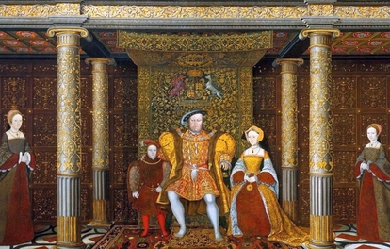
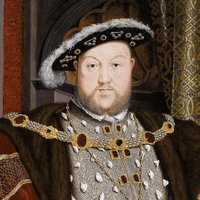
Henry VIII (28 June 1491– 28 January 1547) was King of England from 21 April 1509 until his death. He was the first English King of Ireland, and continued the nominal claim by English monarchs to the Kingdom of France. Henry was the second Tudor monarch, succeeding his father, Henry VII. Henry is known for his consequential role in the separation of the Church of England from the Roman Catholic Church, besides his six marriages and many extramarital affairs, as well as his effort to obtain an annulment of his marriage to Catherine of Aragon, which led to conflict with the Pope. His disagreements with the Pope led Henry to separate the Church of England from papal authority, with himself as king and as the Supreme Head of the Church of England; the disputes also led to the Dissolution of the Monasteries. His principal dispute was with papal authority rather than with doctrinal matters, and he remained a believer in core Catholic theological teachings despite his excommunication from the Roman Catholic Church. Henry oversaw the legal union of England and Wales with the Laws in Wales Acts 1535 and 1542. He is also well known for a long personal rivalry with both Francis I of France and the Holy Roman Emperor Charles V, with whom he frequently warred. Domestically, Henry is known for his radical changes to the English Constitution, ushering in the theory of the divine right of kings to England. Besides asserting the sovereign’s supremacy over the Church of England, thus initiating the English Reformation, he greatly expanded royal power. Charges of treason and heresy were commonly used to quash dissent, and those accused were often executed without a formal trial, by means of bills of attainder. He achieved many of his political aims through the work of his chief ministers, some of whom were banished or executed when they fell out of his favour. People such as Thomas Wolsey, Thomas More, Thomas Cromwell, Richard Rich, and Thomas Cranmer figured prominently in Henry’s administration. He was an extravagant spender and used the proceeds from the Dissolution of the Monasteries and acts of the Reformation Parliament to convert money into royal revenue that was formerly paid to Rome. Despite the influx of money from these sources, Henry was continually on the verge of financial ruin due to his personal extravagance as well as his numerous costly continental wars. His contemporaries considered Henry in his prime to be an attractive, educated, and accomplished king, and he has been described as “one of the most charismatic rulers to sit on the English throne”. Besides ruling with considerable power, he was also an author and composer. His desire to provide England with a male heir stemmed partly from personal vanity and partly from his belief that a daughter would be unable to consolidate Tudor power and maintain the fragile peace that existed following the Wars of the Roses. This led to the two things for which Henry is most remembered: his six marriages and his break with the pope (who would not allow an annulment of Henry’s first marriage). As he aged, Henry became severely obese and his health suffered, contributing to his death in 1547. He is frequently characterised in his later life as a lustful, egotistical, harsh, and insecure king. He was succeeded by his son Edward VI. Early years Born 28 June 1491 at the Palace of Placentia in Greenwich, London, Henry Tudor was the third child and second son of Henry VII and Elizabeth of York. Of the young Henry’s six siblings, only three– Arthur, Prince of Wales; Margaret; and Mary– survived infancy. He was baptised by Richard Fox, the Bishop of Exeter, at a church of the Observant Franciscans close to the palace. In 1493, at the age of two, Henry was appointed Constable of Dover Castle and Lord Warden of the Cinque Ports. He was subsequently appointed Earl Marshal of England and Lord Lieutenant of Ireland at age three, and was inducted into the Order of the Bath soon after. The day after the ceremony he was created Duke of York and a month or so later made Warden of the Scottish Marches. In May 1495, he was appointed to the Order of the Garter. Henry was given a first-rate education from leading tutors, becoming fluent in Latin and French, and learning at least some Italian. Not much is known about his early life– save for his appointments– because he was not expected to become king. In November 1501, Henry also played a considerable part in the ceremonies surrounding the marriage of his brother, Prince Arthur, to Catherine of Aragon, the youngest surviving child of King Ferdinand II of Aragon and Queen Isabella I of Castile. As Duke of York, Henry used the arms of his father as king, differenced by a label of three points ermine. In 1502, Arthur died at the age of 15 of sweating sickness, just 20 weeks after his marriage to Catherine. Arthur’s death thrust all his duties upon his younger brother, the 10-year-old Henry. After a little debate, Henry became the new Duke of Cornwall in October 1502, and the new Prince of Wales and Earl of Chester in February 1503. Henry VII gave the boy few tasks. Young Henry was strictly supervised and did not appear in public. As a result, the young Henry would later ascend the throne “untrained in the exacting art of kingship”. Henry VII renewed his efforts to seal a marital alliance between England and Spain, by offering his second son in marriage to Arthur’s widow Catherine. Both Isabella and Henry VII were keen on the idea, which had arisen very shortly after Arthur’s death. On 23 June 1503, a treaty was signed for their marriage, and they were betrothed two days later. A papal dispensation was only needed for the “impediment of public honesty” if the marriage had not been consummated as Catherine and her duenna claimed, but Henry VII and the Spanish ambassador set out instead to obtain a dispensation for “affinity”, which took account of the possibility of consummation. The young Henry’s age, only eleven, prevented cohabitation. Isabella’s death in 1504, and the ensuing problems of succession in Castile, complicated matters. Her father preferred her to stay in England, but Henry VII’s relations with Ferdinand had deteriorated. Catherine was therefore left in limbo for some time, culminating in Prince Henry’s rejection of the marriage as soon he was able, at the age of 14. Ferdinand’s solution was to make his daughter ambassador, allowing her to stay in England indefinitely. Devout, she began to believe that it was God’s will that she marry the prince despite his opposition. Early reign Henry VII died on 21 April 1509, and the 17-year-old Henry succeeded him as king. Soon after his father’s burial on 10 May, Henry suddenly declared that he would indeed marry Catherine, leaving unresolved several issues concerning the papal dispensation and a missing part of the marriage portion. The new king maintained that it had been his father’s dying wish that he marry Catherine. Whether or not this was true, it was certainly convenient. Holy Roman Emperor Maximilian I had been attempting to marry his granddaughter (and Catherine’s niece) Eleanor to Henry; she had now been jilted. Henry’s wedding to Catherine was kept low-key and was held at the friar’s church in Greenwich on 11 June 1509. On 23 June 1509, Henry led the now 23-year-old Catherine from the Tower of London to Westminster Abbey for their coronation, which took place the following day. It was a grand affair: the king’s passage was lined with tapestries and laid with fine cloth. Following the ceremony, there was a grand banquet in Westminster Hall. As Catherine wrote to her father, “our time is spent in continuous festival”. Two days after Henry’s coronation, he arrested his father’s two most unpopular ministers, Sir Richard Empson and Edmund Dudley. They were charged with high treason and were executed in 1510. Historian Ian Crofton has maintained that such executions would become Henry’s primary tactic for dealing with those who stood in his way; the two executions were certainly not the last. Henry also returned to the public some of the money supposedly extorted by the two ministers. By contrast, Henry’s view of the House of York– potential rival claimants for the throne– was more moderate than his father’s had been. Several who had been imprisoned by his father, including the Marquess of Dorset, were pardoned. Others (most notably Edmund de la Pole) went unreconciled; de la Pole was eventually beheaded in 1513, an execution prompted by his brother Richard siding against the king. Soon after, Catherine conceived, but the child, a girl, was stillborn on 31 January 1510. About four months later, Catherine again became pregnant. On New Year’s Day 1511, the child– Henry– was born. After the grief of losing their first child, the couple were pleased to have a boy and there were festivities to celebrate, including a jousting tournament. However, the child died seven weeks later. Catherine had two stillborn sons in 1514 and 1515, but gave birth in February 1516 to a girl, Mary. Relations between Henry and Catherine had been strained, but they eased slightly after Mary’s birth. Although Henry’s marriage to Catherine has since been described as “unusually good”, it is known that Henry took mistresses. It was revealed in 1510 that Henry had been conducting an affair with one of the sisters of Edward Stafford, 3rd Duke of Buckingham, either Elizabeth or Anne Hastings, Countess of Huntingdon. The most significant mistress for about three years, starting in 1516, was Elizabeth Blount. Blount is one of only two completely undisputed mistresses, few for a virile young king. Exactly how many Henry had is disputed: David Loades believes Henry had mistresses “only to a very limited extent”, whilst Alison Weir believes there were numerous other affairs. Catherine did not protest, and in 1518 fell pregnant again with another girl, who was also stillborn. Blount gave birth in June 1519 to Henry’s illegitimate son, Henry FitzRoy. The young boy was made Duke of Richmond in June 1525 in what some thought was one step on the path to his eventual legitimisation. In 1533, FitzRoy married Mary Howard, but died childless three years later. At the time of Richmond’s death in June 1536, Parliament was enacting the Second Succession Act, which could have allowed him to become king. France and the Habsburgs In 1510, France, with a fragile alliance with the Holy Roman Empire in the League of Cambrai, was winning a war against Venice. Henry renewed his father’s friendship with Louis XII of France, an issue that divided his council. Certainly war with the combined might of the two powers would have been exceedingly difficult. Shortly thereafter, however, Henry also signed a pact with Ferdinand. After Pope Julius II created the anti-French Holy League in October 1511, Henry followed Ferdinand’s lead and brought England into the new League. An initial joint Anglo-Spanish attack was planned for the spring to recover Aquitaine for England, the start of making Henry’s dreams of ruling France a reality. The attack, however, following a formal declaration of war in April 1512, was not led by Henry personally and was a considerable failure; Ferdinand used it simply to further his own ends, and it strained the Anglo-Spanish alliance. Nevertheless, the French were pushed out of Italy soon after, and the alliance survived, with both parties keen to win further victories over the French. Henry then pulled off a diplomatic coup by convincing the Emperor to join the Holy League. Remarkably, Henry had also secured the promised title of “Most Christian King of France” from Julius and possibly coronation by the Pope himself in Paris, if only Louis could be defeated. On 30 June 1513, Henry invaded France, and his troops defeated a French army at the Battle of the Spurs– a relatively minor result, but one which was seized on by the English for propaganda purposes. Soon after, the English took Thérouanne and handed it over to Maximillian; Tournai, a more significant settlement, followed. Henry had led the army personally, complete with large entourage. His absence from the country, however, had prompted his brother-in-law, James IV of Scotland, to invade England at the behest of Louis. Nevertheless, the English army, overseen by Queen Catherine, decisively defeated the Scots at the Battle of Flodden on 9 September 1513. Among the dead was the Scottish king, thus ending Scotland’s brief involvement in the war. These campaigns had given Henry a taste of the military success he so desired. However, despite initial indications, he decided not to pursue a 1514 campaign. He had been supporting Ferdinand and Maximilian financially during the campaign but had received little in return; England’s coffers were now empty. With the replacement of Julius by Pope Leo X, who was inclined to negotiate for peace with France, Henry signed his own treaty with Louis: his sister Mary would become Louis’ wife, having previously been pledged to the younger Charles, and peace was secured for eight years, a remarkably long time. Charles V ascended the thrones of both Spain and the Holy Roman Empire following the deaths of his grandfathers, Ferdinand in 1516 and Maximilian in 1519. Francis I likewise became king of France upon the death of Louis in 1515, leaving three relatively young rulers and an opportunity for a clean slate. The careful diplomacy of Cardinal Thomas Wolsey had resulted in the Treaty of London in 1518, aimed at uniting the kingdoms of western Europe in the wake of a new Ottoman threat, and it seemed that peace might be secured. Henry met Francis I on 7 June 1520 at the Field of the Cloth of Gold near Calais for a fortnight of lavish entertainment. Both hoped for friendly relations in place of the wars of the previous decade. The strong air of competition laid to rest any hopes of a renewal of the Treaty of London, however, and conflict was inevitable. Henry had more in common with Charles, whom he met once before and once after Francis. Charles brought the Empire into war with France in 1521; Henry offered to mediate, but little was achieved and by the end of the year Henry had aligned England with Charles. He still clung to his previous aim of restoring English lands in France, but also sought to secure an alliance with Burgundy, then part of Charles’ realm, and the continued support of Charles. A small English attack in the north of France made up little ground. Charles defeated and captured Francis at Pavia and could dictate peace; but he believed he owed Henry nothing. Sensing this, Henry decided to take England out of the war before his ally, signing the Treaty of the More on 30 August 1525. Annulment from Catherine During his first marriage to Catherine of Aragon, Henry conducted an affair with Mary Boleyn, Catherine’s lady-in-waiting. There has been speculation that Mary’s two children, Henry and Catherine Carey, were fathered by Henry, but this has never been proved, and the King never acknowledged them as he did Henry FitzRoy. In 1525, as Henry grew more impatient with Catherine’s inability to produce the male heir he desired, he became enamoured of Mary Boleyn’s sister, Anne, then a charismatic young woman of 25 in the Queen’s entourage. Anne, however, resisted his attempts to seduce her, and refused to become his mistress as her sister Mary Boleyn had. It was in this context that Henry considered his three options for finding a dynastic successor and hence resolving what came to be described at court as the King’s “great matter”. These options were legitimising Henry FitzRoy, which would take the intervention of the pope and would be open to challenge; marrying off Mary as soon as possible and hoping for a grandson to inherit directly, but Mary was considered unlikely to conceive before Henry’s death; or somehow rejecting Catherine and marrying someone else of child-bearing age. Probably seeing the possibility of marrying Anne, the third was ultimately the most attractive possibility to the 34-year-old Henry, and it soon became the King’s absorbing desire to annul his marriage to the now 40-year-old Catherine. It was a decision that would lead Henry to reject papal authority and initiate the English Reformation. Henry’s precise motivations and intentions over the coming years are not widely agreed on. Henry himself, at least in the early part of his reign, was a devout and well-informed Catholic to the extent that his 1521 publication Assertio Septem Sacramentorum ("Defence of the Seven Sacraments") earned him the title of Fidei Defensor (Defender of the Faith) from Pope Leo X. The work represented a staunch defence of papal supremacy, albeit one couched in somewhat contingent terms. It is not clear exactly when Henry changed his mind on the issue as he grew more intent on a second marriage. Certainly, by 1527 he had convinced himself that in marrying Catherine, his brother’s wife, he had acted contrary to Leviticus 20:21, an impediment the Pope had never had (he now believed) the authority to dispense with. It was this argument Henry took to Pope Clement VII in 1527 in the hope of having his marriage to Catherine annulled, forgoing at least one less openly defiant line of attack. In going public, all hope of tempting Catherine to retire to a nunnery or otherwise stay quiet were lost. Henry sent his secretary, William Knight, to appeal directly to the Holy See by way of a deceptively worded draft papal bull. Knight was unsuccessful; the Pope could not be misled so easily. Other missions concentrated on arranging an ecclesiastical court to meet in England, with a representative from Clement VII. Though Clement agreed to the creation of such a court, he never had any intention of empowering his legate, Lorenzo Campeggio, to decide in Henry’s favour. This bias was perhaps the result of pressure from Charles V, Catherine’s nephew, though it is not clear how far this influenced either Campeggio or the Pope. After less than two months of hearing evidence, Clement called the case back to Rome in July 1529, from which it was clear that it would never re-emerge. With the chance for an annulment lost and England’s place in Europe forfeit, Cardinal Wolsey bore the blame. He was charged with praemunire in October 1529 and his fall from grace was “sudden and total”. Briefly reconciled with Henry (and officially pardoned) in the first half of 1530, he was charged once more in November 1530, this time for treason, but died while awaiting trial. After a short period in which Henry took government upon his own shoulders, Sir Thomas More took on the role of Lord Chancellor and chief minister. Intelligent and able, but also a devout Catholic and opponent of the annulment, More initially cooperated with the king’s new policy, denouncing Wolsey in Parliament. A year later, Catherine was banished from court, and her rooms were given to Anne. Anne was an unusually educated and intellectual woman for her time, and was keenly absorbed and engaged with the ideas of the Protestant Reformers, though the extent to which she herself was a committed Protestant is much debated. When Archbishop of Canterbury William Warham died, Anne’s influence and the need to find a trustworthy supporter of the annulment had Thomas Cranmer appointed to the vacant position. This was approved by the Pope, unaware of the King’s nascent plans for the Church. Marriage to Anne Boleyn In the winter of 1532, Henry met with Francis I at Calais and enlisted the support of the French king for his new marriage. Immediately upon returning to Dover in England, Henry, now 41, and Anne, now 32, went through a secret wedding service. She soon became pregnant, and there was a second wedding service in London on 25 January 1533. On 23 May 1533, Cranmer, sitting in judgment at a special court convened at Dunstable Priory to rule on the validity of the king’s marriage to Catherine of Aragon, declared the marriage of Henry and Catherine null and void. Five days later, on 28 May 1533, Cranmer declared the marriage of Henry and Anne to be valid. Catherine was formally stripped of her title as queen, becoming instead “princess dowager” as the widow of Arthur. In her place, Anne was crowned queen consort on 1 June 1533. The queen gave birth to a daughter slightly prematurely on 7 September 1533. The child was christened Elizabeth, in honour of Henry’s mother, Elizabeth of York. Following the marriage, there was a period of consolidation taking the form of a series of statutes of the Reformation Parliament aimed at finding solutions to any remaining issues, whilst protecting the new reforms from challenge, convincing the public of their legitimacy, and exposing and dealing with opponents. Although the canon law was dealt with at length by Cranmer and others, these acts were advanced by Thomas Cromwell, Thomas Audley and the Duke of Norfolk and indeed by Henry himself. With this process complete, in May 1532 More resigned as Lord Chancellor, leaving Cromwell as Henry’s chief minister. With the Act of Succession 1533, Catherine’s daughter, Mary, was declared illegitimate; Henry’s marriage to Anne was declared legitimate; and Anne’s issue was decided to be next in the line of succession. With the Acts of Supremacy in 1534, Parliament also recognised the King’s status as head of the church in England and, with the Act in Restraint of Appeals in 1532, abolished the right of appeal to Rome. It was only then that Pope Clement took the step of excommunicating Henry and Thomas Cranmer, although the excommunication was not made official until some time later. The king and queen were not pleased with married life. The royal couple enjoyed periods of calm and affection, but Anne refused to play the submissive role expected of her. The vivacity and opinionated intellect that had made her so attractive as an illicit lover made her too independent for the largely ceremonial role of a royal wife and it made her many enemies. For his part, Henry disliked Anne’s constant irritability and violent temper. After a false pregnancy or miscarriage in 1534, he saw her failure to give him a son as a betrayal. As early as Christmas 1534, Henry was discussing with Cranmer and Cromwell the chances of leaving Anne without having to return to Catherine. Henry is traditionally believed to have had an affair with Margaret ("Madge") Shelton in 1535, although historian Antonia Fraser argues that Henry in fact had an affair with her sister Mary Shelton. Opposition to Henry’s religious policies was quickly suppressed in England. A number of dissenting monks, including the first Carthusian Martyrs, were executed and many more pilloried. The most prominent resisters included John Fisher, Bishop of Rochester, and Sir Thomas More, both of whom refused to take the oath to the King. Neither Henry nor Cromwell sought to have the men executed; rather, they hoped that the two might change their minds and save themselves. Fisher openly rejected Henry as supreme head of the Church, but More was careful to avoid openly breaking the Treason Act, which (unlike later acts) did not forbid mere silence. Both men were subsequently convicted of high treason, however– More on the evidence of a single conversation with Richard Rich, the Solicitor General. Both were duly executed in the summer of 1535. These suppressions, as well as the Dissolution of the Lesser Monasteries Act of 1536, in turn contributed to more general resistance to Henry’s reforms, most notably in the Pilgrimage of Grace, a large uprising in northern England in October 1536. Some 20,000 to 40,000 rebels were led by Robert Aske, together with parts of the northern nobility. Henry VIII promised the rebels he would pardon them and thanked them for raising the issues. Aske told the rebels they had been successful and they could disperse and go home. Henry saw the rebels as traitors and did not feel obliged to keep his promises with them, so when further violence occurred after Henry’s offer of a pardon he was quick to break his promise of clemency. The leaders, including Aske, were arrested and executed for treason. In total, about 200 rebels were executed, and the disturbances ended. Execution of Anne Boleyn On 8 January 1536 news reached the king and the queen that Catherine of Aragon had died. Henry called for public displays of joy regarding Catherine’s death. The queen was pregnant again, and she was aware of the consequences if she failed to give birth to a son. Later that month, the King was unhorsed in a tournament and was badly injured and it seemed for a time that his life was in danger. When news of this accident reached the queen, she was sent into shock and miscarried a male child that was about 15 weeks old, on the day of Catherine’s funeral, 29 January 1536. For most observers, this personal loss was the beginning of the end of the royal marriage. Given the king’s desperate desire for a son, the sequence of Anne’s pregnancies has attracted much interest. Author Mike Ashley speculated that Anne had two stillborn children after Elizabeth’s birth and before the birth of the male child she miscarried in 1536. Most sources attest only to the birth of Elizabeth in September 1533, a possible miscarriage in the summer of 1534, and the miscarriage of a male child, of almost four months gestation, in January 1536. Although the Boleyn family still held important positions on the Privy Council, Anne had many enemies, including the Duke of Suffolk. Even her own uncle, the Duke of Norfolk, had come to resent her attitude to her power. The Boleyns preferred France over the Emperor as a potential ally, but the King’s favour had swung towards the latter (partly because of Cromwell), damaging the family’s influence. Also opposed to Anne were supporters of reconciliation with Princess Mary (among them the former supporters of Catherine), who had reached maturity. A second annulment was now a real possibility, although it is commonly believed that it was Cromwell’s anti-Boleyn influence that led opponents to look for a way of having her executed. Anne’s downfall came shortly after she had recovered from her final miscarriage. Whether it was primarily the result of allegations of conspiracy, adultery, or witchcraft remains a matter of debate among historians. Early signs of a fall from grace included the King’s new mistress, the 28-year-old Jane Seymour, being moved into new quarters, and Anne’s brother, George Boleyn, being refused the Order of the Garter, which was instead given to Nicholas Carew. Between 30 April and 2 May, five men, including Anne’s brother, were arrested on charges of treasonable adultery and accused of having sexual relationships with the queen. Anne was also arrested, accused of treasonous adultery and incest. Although the evidence against them was unconvincing, the accused were found guilty and condemned to death. George Boleyn and the other accused men were executed on 17 May 1536. At 8 am on 19 May 1536, Anne, age 36, was executed on Tower Green. Marriage to Jane Seymour; domestic and foreign affairs The day after Anne’s execution in 1536 the 45-year-old Henry became engaged to Seymour, who had been one of the Queen’s ladies-in-waiting. They were married ten days later. On 12 October 1537, Jane gave birth to a son, Prince Edward, the future Edward VI. The birth was difficult, and the queen died on 24 October 1537 from an infection and was buried in Windsor. The euphoria that had accompanied Edward’s birth became sorrow, but it was only over time that Henry came to long for his wife. At the time, Henry recovered quickly from the shock. Measures were immediately put in place to find another wife for Henry, which, at the insistence of Cromwell and the court, were focused on the European continent. With Charles V distracted by the internal politics of his many kingdoms and external threats, and Henry and Francis on relatively good terms, domestic and not foreign policy issues had been Henry’s priority in the first half of the 1530s. In 1536, for example, Henry granted his assent to the Laws in Wales Act 1535, which legally annexed Wales, uniting England and Wales into a single nation. This was followed by the Second Succession Act (the Act of Succession 1536), which declared Henry’s children by Jane to be next in the line of succession and declared both Mary and Elizabeth illegitimate, thus excluding them from the throne. The king was also granted the power to further determine the line of succession in his will, should he have no further issue. However, when Charles and Francis made peace in January 1539, Henry became increasingly paranoid, perhaps as a result of receiving a constant list of threats to the kingdom (real or imaginary, minor or serious) supplied by Cromwell in his role as spymaster. Enriched by the dissolution of the monasteries, Henry used some of his financial reserves to build a series of coastal defences and set some aside for use in the event of a Franco-German invasion. Marriage to Anne of Cleves Having considered the matter, Cromwell, now Earl of Essex, suggested Anne, the 25-year-old sister of the Duke of Cleves, who was seen as an important ally in case of a Roman Catholic attack on England, for the duke fell between Lutheranism and Catholicism. Hans Holbein the Younger was dispatched to Cleves to paint a portrait of Anne for the king. Despite speculation that Holbein painted her in an overly flattering light, it is more likely that the portrait was accurate; Holbein remained in favour at court. After seeing Holbein’s portrait, and urged on by the complimentary description of Anne given by his courtiers, the 49-year-old king agreed to wed Anne. However, it was not long before Henry wished to annul the marriage so he could marry another. Anne did not argue, and confirmed that the marriage had never been consummated. Anne’s previous betrothal to the Duke of Lorraine’s son provided further grounds for the annulment. The marriage was subsequently dissolved, and Anne received the title of “The King’s Sister”, two houses and a generous allowance. It was soon clear that Henry had fallen for the 17-year-old Catherine Howard, the Duke of Norfolk’s niece, the politics of which worried Cromwell, for Norfolk was a political opponent. Shortly after, the religious reformers (and protégés of Cromwell) Robert Barnes, William Jerome and Thomas Garret were burned as heretics. Cromwell, meanwhile, fell out of favour although it is unclear exactly why, for there is little evidence of differences of domestic or foreign policy. Despite his role, he was never formally accused of being responsible for Henry’s failed marriage. Cromwell was now surrounded by enemies at court, with Norfolk also able to draw on his niece’s position. Cromwell was charged with treason, selling export licences, granting passports, and drawing up commissions without permission, and may also have been blamed for the failure of the foreign policy that accompanied the attempted marriage to Anne. He was subsequently attainted and beheaded. Marriage to Catherine Howard On 28 July 1540 (the same day Cromwell was executed), Henry married the young Catherine Howard, a first cousin and lady-in-waiting of Anne Boleyn. He was absolutely delighted with his new queen, and awarded her the lands of Cromwell and a vast array of jewellery. Soon after the marriage, however, Queen Catherine had an affair with the courtier Thomas Culpeper. She also employed Francis Dereham, who had previously been informally engaged to her and had an affair with her prior to her marriage, as her secretary. The court was informed of her affair with Dereham whilst Henry was away; they dispatched Thomas Cranmer to investigate, who brought evidence of Queen Catherine’s previous affair with Dereham to the king’s notice. Though Henry originally refused to believe the allegations, Dereham confessed. It took another meeting of the council, however, before Henry believed the accusations against Dereham and went into a rage, blaming the council before consoling himself in hunting. When questioned, the queen could have admitted a prior contract to marry Dereham, which would have made her subsequent marriage to Henry invalid, but she instead claimed that Dereham had forced her to enter into an adulterous relationship. Dereham, meanwhile, exposed Queen Catherine’s relationship with Culpeper. Culpeper and Dereham were both executed, and Catherine too was beheaded on 13 February 1542. Shrines destroyed and monasteries dissolved In 1538, the chief minister T. Cromwell pursued an extensive campaign against what is termed “idolatry” by the followers of the old religion, culminating in September with the dismantling of the shrine of St. Thomas Becket at Canterbury. As a consequence, the king was excommunicated by the Pope Paul III on 17 December of the same year. In 1540, Henry sanctioned the complete destruction of shrines to saints. In 1542, England’s remaining monasteries were all dissolved, and their property transferred to the Crown. Abbots and priors lost their seats in the House of Lords; only archbishops and bishops remained. Consequently, the Lords Spiritual– as members of the clergy with seats in the House of Lords were known– were for the first time outnumbered by the Lords Temporal. Second invasion of France and the “Rough Wooing” of Scotland The 1539 alliance between Francis and Charles had soured, eventually degenerating into renewed war. With Catherine of Aragon and Anne Boleyn dead, relations between Charles and Henry improved considerably, and Henry concluded a secret alliance with the Emperor and decided to enter the Italian War in favour of his new ally. An invasion of France was planned for 1543. In preparation for it, Henry moved to eliminate the potential threat of Scotland under the youthful James V. Victory would continue the Reformation in Scotland, which was still Catholic, and Henry hoped to unite the crowns of England and Scotland by marriage of James’ daughter, the future Mary, Queen of Scots, to his son Edward. Henry made war on Scotland for several years in pursuit of this goal, a campaign dubbed by Victorian chroniclers as “the Rough Wooing”. The Scots were defeated at Battle of Solway Moss on 24 November 1542, and James died on 15 December. The Scottish Regent Arran agreed to the marriage in the Treaty of Greenwich on 1 July 1543. Despite the success with Scotland, Henry hesitated to invade France, annoying Charles. Henry finally went to France in June 1544 with a two-pronged attack. One force under Norfolk ineffectively besieged Montreuil. The other, under Suffolk, laid siege to Boulogne. Henry later took personal command, and Boulogne fell on 18 September 1544. However, Henry had refused Charles’ request to march against Paris. Charles’ own campaign fizzled, and he made peace with France that same day. Henry was left alone against France, unable to make peace. Francis attempted to invade England in the summer of 1545, but reached only the Isle of Wight before being repulsed. Out of money, France and England signed the Treaty of Camp on 7 June 1546. Henry secured Boulogne for eight years. The city was then to be returned to France for 2 million crowns (£750,000). Henry needed the money; the 1544 campaign had cost £650,000, and England was once again bankrupt. Meanwhile, though Henry still clung to the Treaty of Greenwich, the Scots repudiated it in December 1543. Henry launched another war on Scotland, sending an army to burn Edinburgh and lay waste to the country. The Scots would not submit, though. Defeat at Ancrum Moor prompted a second invasion force. This war was nominally ended by the Treaty of Camp, although unrest continued in Scotland, including French and English interventions, up to Henry’s death. Marriage to Catherine Parr Henry married his last wife, the wealthy widow Catherine Parr, in July 1543. A reformer at heart, she argued with Henry over religion. Ultimately, Henry remained committed to an idiosyncratic mixture of Catholicism and Protestantism; the reactionary mood which had gained ground following the fall of Cromwell had neither eliminated his Protestant streak nor been overcome by it. Parr helped reconcile Henry with his daughters Mary and Elizabeth. In 1543, an Act of Parliament put the daughters back in the line of succession after Edward, Prince of Wales. The same act allowed Henry to determine further succession to the throne in his will. Physical decline Late in life, Henry became obese, with a waist measurement of 54 inches (140 cm), and had to be moved about with the help of mechanical inventions. He was covered with painful, pus-filled boils and possibly suffered from gout. His obesity and other medical problems can be traced from the jousting accident in 1536, in which he suffered a leg wound. The accident re-opened and aggravated a previous injury he had sustained years earlier, to the extent that his doctors found it difficult to treat. The wound festered for the remainder of his life and became ulcerated, thus preventing him from maintaining the level of physical activity he had previously enjoyed. The jousting accident is also believed to have caused Henry’s mood swings, which may have had a dramatic effect on his personality and temperament. The theory that Henry suffered from syphilis has been dismissed by most historians. A more recent theory suggests that Henry’s medical symptoms are characteristic of untreated type 2 diabetes. Alternatively, his wives’ pattern of pregnancies and his mental deterioration have led some to suggest that the king may have been Kell positive and suffered from McLeod syndrome. According to another study, Henry VIII’s history and body morphology may have been the result of traumatic brain injury after his 1536 jousting accident, which in turn led to a neuroendocrine cause of his obesity. This analysis identifies growth hormone deficiency (GHD) as the source for his increased adiposity but also significant behavioural changes noted in his later years, including his multiple marriages. Death and burial Henry’s obesity hastened his death at the age of 55, which occurred on 28 January 1547 in the Palace of Whitehall, on what would have been his father’s 90th birthday. He allegedly uttered his last words: “Monks! Monks! Monks!” perhaps in reference to the monks he caused to be evicted during the Dissolution of the Monasteries. On 14 February 1547 Henry’s coffin lay overnight at Syon Monastery, en route for burial in St George’s Chapel, Windsor Castle. Twelve years before in 1535 a Franciscan friar named William Peyto (or Peto, Petow) (died 1558 or 1559), had preached before the King at Greenwich Palace “that God’s judgements were ready to fall upon his head and that dogs would lick his blood, as they had done to Ahab”, whose infamy rests upon 1 Kings 16:33: “And Ahab did more to provoke the Lord God of Israel to anger than all the kings of Israel that were before him”. The prophecy was said to have been fulfilled during this night at Syon, when some “corrupted matter of a bloody colour” fell from the coffin to the floor. Henry VIII was interred in St George’s Chapel in Windsor Castle, next to Jane Seymour. Over a hundred years later, King Charles I (1625–1649) was buried in the same vault. Succession After his death, Henry’s only legitimate son, Edward, inherited the Crown, becoming Edward VI (1547–1553). Since Edward was then only nine years old, he could not exercise actual power. Rather, Henry’s will designated 16 executors to serve on a council of regency until Edward reached the age of 18. The executors chose Edward Seymour, 1st Earl of Hertford, Jane Seymour’s elder brother, to be Lord Protector of the Realm. If Edward went childless, the throne was to pass to Mary, Henry VIII’s daughter by Catherine of Aragon, and her heirs. If Mary’s issue failed, the crown was to go to Elizabeth, Henry’s daughter by Anne Boleyn, and her heirs. Finally, if Elizabeth’s line became extinct, the crown was to be inherited by the descendants of Henry VIII’s deceased younger sister, Queen Mary of France, the Greys. The descendants of Henry’s sister Margaret– the Stuarts, rulers of Scotland– were thereby excluded from the succession. This final provision failed when James VI of Scotland became James I of England upon Elizabeth’s death. Public image Henry cultivated the image of a Renaissance man, and his court was a centre of scholarly and artistic innovation and glamorous excess, epitomised by the Field of the Cloth of Gold. He scouted the country for choirboys, taking some directly from Wolsey’s choir, and introduced Renaissance music into court. Musicians included Benedict de Opitiis, Richard Sampson, Ambrose Lupo, and Venetian organist Dionisio Memo. Henry himself kept a considerable collection of instruments; he was skilled on the lute, could play the organ, and was a talented player of the virginals. He could also sight read music and sing well. He was an accomplished musician, author, and poet; his best known piece of music is “Pastime with Good Company” ("The Kynges Ballade"). He is often reputed to have written “Greensleeves” but probably did not. He was an avid gambler and dice player, and excelled at sports, especially jousting, hunting, and real tennis. He was known for his strong defence of conventional Christian piety. The King was involved in the original construction and improvement of several significant buildings, including Nonsuch Palace, King’s College Chapel, Cambridge and Westminster Abbey in London. Many of the existing buildings Henry improved were properties confiscated from Wolsey, such as Christ Church, Oxford; Hampton Court Palace; the Palace of Whitehall; and Trinity College, Cambridge. Henry was an intellectual. The first English king with a modern humanist education, he read and wrote English, French and Latin, and was thoroughly at home in his well-stocked library. He personally annotated many books and wrote and published one of his own. To promote the public support for the reformation of the church, Henry had numerous pamphlets and lectures prepared. For example, Richard Sampson’s Oratio (1534) was an argument for absolute obedience to the monarchy and claimed that the English church had always been independent from Rome. At the popular level, theatre and minstrel troupes funded by the crown travelled around the land to promote the new religious practices: the pope and Catholic priests and monks were mocked as foreign devils, while the glorious king was hailed as a brave and heroic defender of the true faith. Henry worked hard to present an image of unchallengeable authority and irresistible power. A large well-built athlete (over 6 feet [1.8 m] tall and strong and broad in proportion), Henry excelled at jousting and hunting. More than pastimes, they were political devices that served multiple goals, from enhancing his athletic royal image to impressing foreign emissaries and rulers, to conveying Henry’s ability to suppress any rebellion. Thus he arranged a jousting tournament at Greenwich in 1517, where he wore gilded armour, gilded horse trappings, and outfits of velvet, satin and cloth of gold dripping with pearls and jewels. It suitably impressed foreign ambassadors, one of whom wrote home that, “The wealth and civilisation of the world are here, and those who call the English barbarians appear to me to render themselves such”. Henry finally retired from jousting in 1536 after a heavy fall from his horse left him unconscious for two hours, but he continued to sponsor two lavish tournaments a year. He then started adding weight and lost the trim, athletic figure that had made him so handsome; Henry’s courtiers began dressing in heavily padded clothes to emulate– and flatter– their increasingly stout monarch. Towards the end of his reign his health rapidly declined. Government The power of Tudor monarchs, including Henry, was 'whole’ and 'entire’, ruling, as they claimed, by the grace of God alone. The crown could also rely on the exclusive use of those functions that constituted the royal prerogative. These included acts of diplomacy (including royal marriages), declarations of war, management of the coinage, the issue of royal pardons and the power to summon and dissolve parliament as and when required. Nevertheless, as evident during Henry’s break with Rome, the monarch worked within established limits, whether legal or financial, that forced him to work closely with both the nobility and parliament (representing the gentry). In practice, Tudor monarchs used patronage to maintain a royal court that included formal institutions such as the Privy Council as well as more informal advisers and confidants. Both the rise and fall of court nobles could be swift: although the often-quoted figure of 72,000 executions during his reign is inflated, Henry did undoubtedly execute at will, burning or beheading two of his wives, twenty peers, four leading public servants, six close attendants and friends, one cardinal (John Fisher) and numerous abbots. Among those who were in favour at any given point in Henry’s reign, one could usually be identified as a chief minister, though one of the enduring debates in the historiography of the period has been the extent to which those chief ministers controlled Henry rather than vice versa. In particular, historian G. R. Elton has argued that one such minister, Thomas Cromwell, led a “Tudor revolution in government” quite independent of the king, whom Elton presented as an opportunistic, essentially lazy participant in the nitty-gritty of politics. Where Henry did intervene personally in the running of the country, Elton argued, he mostly did so to its detriment. The prominence and influence of faction in Henry’s court is similarly discussed in the context of at least five episodes of Henry’s reign, including the downfall of Anne Boleyn. From 1514 to 1529, Thomas Wolsey (1473–1530), a cardinal of the established Church, oversaw domestic and foreign policy for the young king from his position as Lord Chancellor. Wolsey centralised the national government and extended the jurisdiction of the conciliar courts, particularly the Star Chamber. The Star Chamber’s overall structure remained unchanged, but Wolsey used it to provide for much-needed reform of the criminal law. The power of the court itself did not outlive Wolsey, however, since no serious administrative reform was undertaken and its role was eventually devolved to the localities. Wolsey helped fill the gap left by Henry’s declining participation in government (particularly in comparison to his father) but did so mostly by imposing himself in the King’s place. His use of these courts to pursue personal grievances, and particularly to treat delinquents as if mere examples of a whole class worthy of punishment, angered the rich, who were annoyed as well by his enormous wealth and ostentatious living. Following Wolsey’s downfall, Henry took full control of his government, although at court numerous complex factions continued to try to ruin and destroy each other. Thomas Cromwell (c. 1485–1540) also came to define Henry’s government. Returning to England from the continent in 1514 or 1515, Cromwell soon entered Wolsey’s service. He turned to law, also picking up a good knowledge of the Bible, and was admitted to Gray’s Inn in 1524. He became Wolsey’s “man of all work”. Cromwell, driven in part by his religious beliefs, attempted to reform the body politic of the English government through discussion and consent, and through the vehicle of continuity and not outward change. He was seen by many people as the man they wanted to bring about their shared aims, including Thomas Audley. By 1531, Cromwell and those associated with him were already responsible for the drafting of much legislation. Cromwell’s first office was that of the master of the King’s jewels in 1532, from which he began to invigorate the government finances. By this point, Cromwell’s power as an efficient administrator in a Council full of politicians exceeded what Wolsey had achieved. Cromwell did much work through his many offices to remove the tasks of government from the Royal Household (and ideologically from the personal body of the King) and into a public state. He did so, however, in a haphazard fashion that left several remnants, not least because he needed to retain Henry’s support, his own power, and the possibility of actually achieving the plan he set out. Cromwell made the various income streams put in place by Henry VII more formal and assigned largely autonomous bodies for their administration. The role of the King’s Council was transferred to a reformed Privy Council, much smaller and more efficient than its predecessor. A difference emerged between the financial health of the king, and that of the country, although Cromwell’s fall undermined much of his bureaucracy, which required his hand to keep order among the many new bodies and prevent profligate spending that strained relations as well as finances. Cromwell’s reforms ground to a halt in 1539, the initiative lost, and he failed to secure the passage of an enabling act, the Proclamation by the Crown Act 1539. He too was executed, on 28 July 1540. Finances Henry inherited a vast fortune and a prosperous economy from his father Henry VII, who had been frugal and careful with money. This fortune was estimated to £1,250,000 (£375 million by today’s standards). By comparison, however, the reign of Henry was a near-disaster in financial terms. Although he further augmented his royal treasury through the seizure of church lands, Henry’s heavy spending and long periods of mismanagement damaged the economy. Much of this wealth was spent by Henry on maintaining his court and household, including many of the building works he undertook on royal palaces. Henry hung 2,000 tapestries in his palaces; by comparison, James V of Scotland hung just 200. Henry took pride in showing off his collection of weapons, which included exotic archery equipment, 2,250 pieces of land ordnance and 6,500 handguns. Tudor monarchs had to fund all the expenses of government out of their own income. This income came from the Crown lands that Henry owned as well as from customs duties like tonnage and poundage, granted by parliament to the king for life. During Henry’s reign the revenues of the Crown remained constant (around £100,000), but were eroded by inflation and rising prices brought about by war. Indeed, war and Henry’s dynastic ambitions in Europe exhausted the surplus he had inherited from his father by the mid-1520s. Whereas Henry VII had not involved Parliament in his affairs very much, Henry VIII had to turn to Parliament during his reign for money, in particular for grants of subsidies to fund his wars. The Dissolution of the Monasteries provided a means to replenish the treasury, and as a result the Crown took possession of monastic lands worth £120,000 (£36 million) a year. The Crown had profited a small amount in 1526 when Wolsey had put England onto a gold, rather than silver, standard, and had debased the currency slightly. Cromwell debased the currency more significantly, starting in Ireland in 1540. The English pound halved in value against the Flemish pound between 1540 and 1551 as a result. The nominal profit made was significant, helping to bring income and expenditure together, but it had a catastrophic effect on the overall economy of the country. In part, it helped to bring about a period of very high inflation from 1544 onwards. Reformation Henry is generally credited with initiating the English Reformation– the process of transforming England from a Catholic country to a Protestant one– though his progress at the elite and mass levels is disputed, and the precise narrative not widely agreed. Certainly, in 1527, Henry, until then an observant and well-informed Catholic, appealed to the Pope for an annulment of his marriage to Catherine. No annulment was immediately forthcoming, the result in part of Charles V’s control of the Papacy. The traditional narrative gives this refusal as the trigger for Henry’s rejection of papal supremacy (which he had previously defended), though as historian A. F. Pollard has argued, even if Henry had not needed an annulment, Henry may have come to reject papal control over the governance of England purely for political reasons. In any case, between 1532 and 1537, Henry instituted a number of statutes that dealt with the relationship between king and pope and hence the structure of the nascent Church of England. These included the Statute in Restraint of Appeals (passed 1533), which extended the charge of praemunire against all who introduced papal bulls into England, potentially exposing them to the death penalty if found guilty. Other acts included the Supplication against the Ordinaries and the Submission of the Clergy, which recognised Royal Supremacy over the church. The Ecclesiastical Appointments Act 1534 required the clergy to elect bishops nominated by the Sovereign. The Act of Supremacy in 1534 declared that the King was “the only Supreme Head in Earth of the Church of England” and the Treasons Act 1534 made it high treason, punishable by death, to refuse the Oath of Supremacy acknowledging the King as such. Similarly, following the passage of the Act of Succession 1533, all adults in the Kingdom were required to acknowledge the Act’s provisions (declaring Henry’s marriage to Anne legitimate and his marriage to Catherine illegitimate) by oath; those who refused were subject to imprisonment for life, and any publisher or printer of any literature alleging that the marriage to Anne was invalid subject to the death penalty. Finally, the Peter’s Pence Act was passed, and it reiterated that England had “no superior under God, but only your Grace” and that Henry’s “imperial crown” had been diminished by “the unreasonable and uncharitable usurpations and exactions” of the Pope. The King had much support from the Church under Cranmer. Henry, to Thomas Cromwell’s annoyance, insisted on parliamentary time to discuss questions of faith, which he achieved through the Duke of Norfolk. This led to the passing of the Act of Six Articles, whereby six major questions were all answered by asserting the religious orthodoxy, thus restraining the reform movement in England. It was followed by the beginnings of a reformed liturgy and of the Book of Common Prayer, which would take until 1549 to complete. The victory won by religious conservatives did not convert into much change in personnel, however, and Cranmer remained in his position. Overall, the rest of Henry’s reign saw a subtle movement away from religious orthodoxy, helped in part by the deaths of prominent figures from before the break with Rome, especially the executions of Thomas More and John Fisher in 1535 for refusing to renounce papal authority. Henry established a new political theology of obedience to the crown that was continued for the next decade. It reflected Martin Luther’s new interpretation of the fourth commandment ("Honour thy father and mother"), brought to England by William Tyndale. The founding of royal authority on the Ten Commandments was another important shift: reformers within the Church utilised the Commandments’ emphasis on faith and the word of God, while conservatives emphasised the need for dedication to God and doing good. The reformers’ efforts lay behind the publication of the Great Bible in 1539 in English. Protestant Reformers still faced persecution, particularly over objections to Henry’s annulment. Many fled abroad, including the influential Tyndale, who was eventually executed and his body burned at Henry’s behest. When taxes once payable to Rome were transferred to the Crown, Cromwell saw the need to assess the taxable value of the Church’s extensive holdings as they stood in 1535. The result was an extensive compendium, the Valor Ecclesiasticus. In September of the same year, Cromwell commissioned a more general visitation of religious institutions, to be undertaken by four appointee visitors. The visitation focussed almost exclusively on the country’s religious houses, with largely negative conclusions. In addition to reporting back to Cromwell, the visitors made the lives of the monks more difficult by enforcing strict behavioural standards. The result was to encourage self-dissolution. In any case, the evidence gathered by Cromwell led swiftly to the beginning of the state-enforced dissolution of the monasteries with all religious houses worth less than £200 vested by statute in the crown in January 1536. After a short pause, surviving religious houses were transferred one by one to the Crown and onto new owners, and the dissolution confirmed by a further statute in 1539. By January 1540 no such houses remained: some 800 had been dissolved. The process had been efficient, with minimal resistance, and brought the crown some £90,000 a year. The extent to which the dissolution of all houses was planned from the start is debated by historians; there is some evidence that major houses were originally intended only to be reformed. Cromwell’s actions transferred a fifth of England’s landed wealth to new hands. The programme was designed primarily to create a landed gentry beholden to the crown, which would use the lands much more efficiently. Although little opposition to the supremacy could be found in England’s religious houses, they had links to the international church and were an obstacle to further religious reform. Response to the reforms was mixed. The religious houses had been the only support of the impoverished, and the reforms alienated much of the population outside London, helping to provoke the great northern rising of 1536–1537, known as the Pilgrimage of Grace. Elsewhere the changes were accepted and welcomed, and those who clung to Catholic rites kept quiet or moved in secrecy. They would re-emerge during the reign of Henry’s daughter Mary (1553–1558). Military Apart from permanent garrisons at Berwick, Calais, and Carlisle, England’s standing army numbered only a few hundred men. This was increased only slightly by Henry. Henry’s invasion force of 1513, some 30,000 men, was composed of billmen and longbowmen, at a time when the other European nations were moving to hand guns and pikemen. The difference in capability was at this stage not significant, however, and Henry’s forces had new armour and weaponry. They were also supported by battlefield artillery, a relatively new invention, and several large and expensive siege guns. The invasion force of 1544 was similarly well-equipped and organised, although command on the battlefield was laid with the dukes of Suffolk and Norfolk, which in the case of the latter produced disastrous results at Montreuil. Henry is traditionally cited as one of the founders of the Royal Navy. Technologically, Henry invested in large cannon for his warships, an idea that had taken hold in other countries, to replace the smaller serpentines in use. He also flirted with designing ships personally– although his contribution to larger vessels, if any, is not known, it is believed that he influenced the design of rowbarges and similar galleys. Henry was also responsible for the creation of a permanent navy, with the supporting anchorages and dockyards. Tactically, Henry’s reign saw the Navy move away from boarding tactics to employ gunnery instead. The Navy was enlarged up to fifty ships (the Mary Rose was one of them), and Henry was responsible for the establishment of the “council for marine causes” to specifically oversee all the maintenance and operation of the Navy, becoming the basis for the later Admiralty. Henry’s break with Rome incurred the threat of a large-scale French or Spanish invasion. To guard against this, in 1538, he began to build a chain of expensive, state-of-the-art defences, along Britain’s southern and eastern coasts from Kent to Cornwall, largely built of material gained from the demolition of the monasteries. These were known as Henry VIII’s Device Forts. He also strengthened existing coastal defence fortresses such as Dover Castle and, at Dover, Moat Bulwark and Archcliffe Fort, which he personally visited for a few months to supervise. Wolsey had many years before conducted the censuses required for an overhaul of the system of militia, but no reform resulted. In 1538–39, Cromwell overhauled the shire musters, but his work mainly served to demonstrate how inadequate they were in organisation. The building works, including that at Berwick, along with the reform of the militias and musters, were eventually finished under Queen Mary. Ireland At the beginning of Henry’s reign, Ireland was effectively divided into three zones: the Pale, where English rule was unchallenged; Leinster and Munster, the so-called “obedient land” of Anglo-Irish peers; and the Gaelic Connaught and Ulster, with merely nominal English rule. Until 1513, Henry continued the policy of his father, to allow Irish lords to rule in the king’s name and accept steep divisions between the communities. However, upon the death of the 8th Earl of Kildare, governor of Ireland, fractious Irish politics combined with a more ambitious Henry to cause trouble. When Thomas Butler, 7th Earl of Ormond died, Henry recognised one successor for Ormond’s English, Welsh and Scottish lands, whilst in Ireland another took control. Kildare’s successor, the 9th Earl, was replaced as Lord Lieutenant of Ireland by Thomas Howard, Earl of Surrey in 1520. Surrey’s ambitious aims were costly, but ineffective; English rule became trapped between winning the Irish lords over with diplomacy, as favoured by Henry and Wolsey, and a sweeping military occupation as proposed by Surrey. Surrey was recalled in 1521, with Piers Butler– one of claimants to the Earldom of Ormond– appointed in his place. Butler proved unable to control opposition, including that of Kildare. Kildare was appointed chief governor in 1524, resuming his dispute with Butler, which had before been in a lull. Meanwhile, the Earl of Desmond, an Anglo-Irish peer, had turned his support to Richard de la Pole as pretender to the English throne; when in 1528 Kildare failed to take suitable actions against him, Kildare was once again removed from his post. The Desmond situation was resolved on his death in 1529, which was followed by a period of uncertainty. This was effectively ended with the appointment of Henry FitzRoy, Duke of Richmond and the king’s son, as lord lieutenant. Richmond had never before visited Ireland, his appointment a break with past policy. For a time it looked as if peace might be restored with the return of Kildare to Ireland to manage the tribes, but the effect was limited and the Irish parliament soon rendered ineffective. Ireland began to receive the attention of Cromwell, who had supporters of Ormond and Desmond promoted. Kildare, on the other hand, was summoned to London; after some hesitation, he departed for London in 1534, where he would face charges of treason. His son, Thomas, Lord Offaly was more forthright, denouncing the king and leading a “Catholic crusade” against the king, who was by this time mired in marital problems. Offaly had the Archbishop of Dublin murdered, and besieged Dublin. Offaly led a mixture of Pale gentry and Irish tribes, although he failed to secure the support of Lord Darcy, a sympathiser, or Charles V. What was effectively a civil war was ended with the intervention of 2,000 English troops– a large army by Irish standards– and the execution of Offaly (his father was already dead) and his uncles. Although the Offaly revolt was followed by a determination to rule Ireland more closely, Henry was wary of drawn-out conflict with the tribes, and a royal commission recommended that the only relationship with the tribes was to be promises of peace, their land protected from English expansion. The man to lead this effort was Sir Antony St Leger, as Lord Deputy of Ireland, who would remain into the post past Henry’s death. Until the break with Rome, it was widely believed that Ireland was a Papal possession granted as a mere fiefdom to the English king, so in 1541 Henry asserted England’s claim to the Kingdom of Ireland free from the Papal overlordship. This change did, however, also allow a policy of peaceful reconciliation and expansion: the Lords of Ireland would grant their lands to the King, before being returned as fiefdoms. The incentive to comply with Henry’s request was an accompanying barony, and thus a right to sit in the Irish House of Lords, which was to run in parallel with England’s. The Irish law of the tribes did not suit such an arrangement, because the chieftain did not have the required rights; this made progress tortuous, and the plan was abandoned in 1543, not to be replaced. Historiography The complexities and sheer scale of Henry’s legacy ensured that, in the words of Betteridge and Freeman, "throughout the centuries [since his death], Henry has been praised and reviled, but he has never been ignored". A particular focus of modern historiography has been the extent to which the events of Henry’s life (including his marriages, foreign policy and religious changes) were the result of his own initiative and, if they were, whether they were the result of opportunism or of a principled undertaking by Henry. The traditional interpretation of those events was provided by historian A.F. Pollard, who in 1902 presented his own, largely positive, view of the king, "laud[ing him] as the king and statesman who, whatever his personal failings, led England down the road to parliamentary democracy and empire". Pollard’s interpretation, which was broadly comparable to 17th century publications of Lord Herbert of Cherbury and his contemporaries, remained the dominant interpretation of Henry’s life until the publication of the doctoral thesis of G. R. Elton in 1953. That thesis, entitled “The Tudor Revolution in Government”, maintained Pollard’s positive interpretation of the Henrician period as a whole, but reinterpreted Henry himself as a follower rather than a leader. For Elton, it was Cromwell and not Henry who undertook the changes in government– Henry was shrewd, but lacked the vision to follow a complex plan through. Henry was little more, in other words, than an “ego-centric monstrosity” whose reign "owed its successes and virtues to better and greater men about him; most of its horrors and failures sprang more directly from [the king]". Although the central tenets of Elton’s thesis have now been all but abandoned, it has consistently provided the starting point for much later work, including that of J. J. Scarisbrick, his student. Scarisbrick largely kept Elton’s regard for Cromwell’s abilities, but returned agency to Henry, who Scarisbrick considered to have ultimately directed and shaped policy. For Scarisbrick, Henry was a formidable, captivating man who “wore regality with a splendid conviction”. The effect of endowing Henry with this ability, however, was largely negative in Scarisbrick’s eyes: to Scarisbrick the Henrician period was one of upheaval and destruction and those in charge worthy of blame more than praise. Even among more recent biographers, including David Loades, David Starkey and John Guy, there has ultimately been little consensus on the extent to which Henry was responsible for the changes he oversaw or the correct assessment of those he did bring about. This lack of clarity about Henry’s control over events has contributed to the variation in the qualities ascribed to him: religious conservative or dangerous radical; lover of beauty or brutal destroyer of priceless artefacts; friend and patron or betrayer of those around him; chivalry incarnate or ruthless chauvinist. One traditional approach, favoured by Starkey and others, is to divide Henry’s reign into two halves, the first Henry being dominated by positive qualities (politically inclusive, pious, athletic but also intellectual) who presided over a period of stability and calm, and the latter a “hulking tyrant” who presided over a period of dramatic, sometimes whimsical, change. Other writers have tried to merge Henry’s disparate personality into a single whole; Lacey Baldwin Smith, for example, considered him an egotistical borderline neurotic given to great fits of temper and deep and dangerous suspicions, with a mechanical and conventional, but deeply held piety, and having at best a mediocre intellect. Style and arms Many changes were made to the royal style during his reign. Henry originally used the style “Henry the Eighth, by the Grace of God, King of England, France and Lord of Ireland”. In 1521, pursuant to a grant from Pope Leo X rewarding Henry for his Defence of the Seven Sacraments, the royal style became “Henry the Eighth, by the Grace of God, King of England and France, Defender of the Faith and Lord of Ireland”. Following Henry’s excommunication, Pope Paul III rescinded the grant of the title “Defender of the Faith”, but an Act of Parliament declared that it remained valid; and it continues in royal usage to the present day. Henry’s motto was “Coeur Loyal” ("true heart"), and he had this embroidered on his clothes in the form of a heart symbol and with the word “loyal”. His emblem was the Tudor rose and the Beaufort portcullis. As king, Henry’s arms were the same as those used by his predecessors since Henry IV: Quarterly, Azure three fleurs-de-lys Or (for France) and Gules three lions passant guardant in pale Or (for England). In 1535, Henry added the “supremacy phrase” to the royal style, which became “Henry the Eighth, by the Grace of God, King of England and France, Defender of the Faith, Lord of Ireland and of the Church of England in Earth Supreme Head”. In 1536, the phrase “of the Church of England” changed to “of the Church of England and also of Ireland”. In 1541, Henry had the Irish Parliament change the title “Lord of Ireland” to “King of Ireland” with the Crown of Ireland Act 1542, after being advised that many Irish people regarded the Pope as the true head of their country, with the Lord acting as a mere representative. The reason the Irish regarded the Pope as their overlord was that Ireland had originally been given to King Henry II of England by Pope Adrian IV in the 12th century as a feudal territory under papal overlordship. The meeting of Irish Parliament that proclaimed Henry VIII as King of Ireland was the first meeting attended by the Gaelic Irish chieftains as well as the Anglo-Irish aristocrats. The style “Henry the Eighth, by the Grace of God, King of England, France and Ireland, Defender of the Faith and of the Church of England and also of Ireland in Earth Supreme Head” remained in use until the end of Henry’s reign. Ancestry Marriages and issue References Wikipedia—https://en.wikipedia.org/wiki/Henry_VIII_of_England

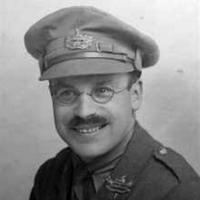
Frederick William Harvey DCM (26 March 1888– 13 February 1957), often known as Will Harvey, and dubbed “the Laureate of Gloucestershire”, was an English poet, broadcaster and solicitor whose poetry became popular during and after World War I. Early life Harvey was born in 1888 in Hartpury, Gloucestershire, and grew up in Minsterworth. He was educated at the King’s School, Gloucester, where he formed a close friendship with Ivor Gurney, and then at Rossall School. Gurney and Herbert Howells, another local composer, would set a number of his poems to music. He started on a legal career, which would always be somewhat tentative; and began to consider conversion to Roman Catholicism. World War I On 8 August 1914, only four days after the United Kingdom had declared war on Germany, Harvey joined the 5th battalion of the Gloucestershire Regiment as a private. Shortly afterwards, in November, he became a Roman Catholic. He was an adherent of the distributism movement, described as a “third way”, in opposition to both socialism and capitalism; and he was influenced by the work of G. K. Chesterton and Hilaire Belloc. His battalion was posted to France in March 1915, where he was promoted to lance corporal and awarded the Distinguished Conduct Medal. His citation for the DCM reads: 2371 Lance-Corpl. F.W. Harvey, 1/5th Gloucestershire R[egiment]. (T.F.) For conspicuous gallantry on the night of Aug. 3-4, 1915, near Hebuterne, when, with a patrol, he and another non-commissioned officer went out to reconnoiter in the direction of a suspected listening-post. In advancing they encountered the hostile post, evidently covering a working party in the rear. Corporal Knight at once shot one of the enemy, and, with Lance-Corporal Harvey, rushed the post, shooting two others, and, assistance arriving, the enemy fled. Lance-Corporal Harvey pursued, felling one of the retreating Germans with a bludgeon. He seized him, but, finding his revolver empty and the enemy having opened fire, he was called back by Corporal Knight, and the prisoner escaped. Three Germans were killed, and their rifles and a Mauser pistol were brought in. The patrol had no loss. He returned to England for officer training, but after being commissioned and returning to France he was captured on 17 August 1916 in the German front-line trench while carrying out a reconnaissance patrol. He spent the remainder of the war in prisoner-of-war camps, including those at Gütersloh, Crefeld, Schwarmstedt, Holzminden, Bad Colberg, and Stralsund. Writing Soon after his arrival in France, Harvey had begun to contribute to a trench newspaper, the Fifth Gloucester Gazette. His first volume of poems, A Gloucestershire Lad At Home and Abroad, was published in September 1916, shortly after his capture. He began to write more intensively in captivity, and poems were sent back to England for publication: his second collection, Gloucestershire Friends, appeared in 1917. His time in the camps is held to be his most productive period of writing. On returning from a spell of solitary confinement at Holzminden after a failed escape attempt, he saw that a fellow prisoner had drawn a picture over his bed in chalk of ducks in a pool of water. This inspired his most celebrated poem (and the title poem of his third collection, published in 1919), “Ducks”. Post-war life Harvey returned home in 1919, married in 1921, and returned to legal practice. He became a respected and loved figure in the Forest of Dean. He worked largely as a defence solicitor (his own captivity convincing him that incarceration was destructive and pointless), and became known as the “poor man’s solicitor”. His work was not financially successful, and in the 1930s he sold his practice. In 1920 he published a memoir of his prison-camp experiences, Comrades in Captivity; and in 1921 Farewell, the title an acknowledgement of his intention to remove himself from the literary world. He had a brief creative union with his great friend and collaborator, Ivor Gurney, which was cut short by Gurney’s mental breakdown. His gift for oration, versatile voice and scripting led him to become a popular broadcaster at the BBC, Bristol, where he used his popularity to promote the Forest of Dean, its people and traditions. He promoted local choirs, musicians and young authors such as Leonard Clark. He was friends with Rutland Boughton and the local MP, Morgan Philips Price, who worked with him to promote the arts and the interests of Foresters. Later years In later life Harvey craved the comradeship he had found in the trenches and was disappointed that the new social order he had anticipated never happened. His later poetry of remembrance captured those feelings, but retained the essential humour of his early work and included verse in the local dialect. In 1956, in failing health, he attended the Three Choirs Festival at Gloucester Cathedral to hear Elgar’s The Dream of Gerontius, a work that had inspired his ideas about creativity and beauty some fifty years earlier. He died the following year and was buried at Minsterworth. Personal life In 1921 Harvey married Anne Kane, an Irish nurse. They had two children, Eileen Anne (born 1922) and Patrick (born 1925). He led a bohemian lifestyle, rejecting material values, and often recklessly gave away his professional services and income. Reputation and legacy Harvey’s poems published during and immediately after World War I were highly acclaimed, and his status was acknowledged when a collection was published in 1926 in the Augustan Books of Modern Poetry series, edited by Edward Thompson. The lyricism of his poetry led to it being set to music by his friends Ivor Gurney, Herbert Howells and Sir Herbert Brewer, among others. It continues to be used by contemporary composers including Johnny Coppin. His work is particularly noted for its appreciation of the natural world and the landscape and traditions of West Gloucestershire. Harvey was commemorated by a slate memorial tablet in the south transept of Gloucester Cathedral in 1980. “Ducks”, Harvey’s best known work, was voted one of the nation’s 100 favourite poems in 1996 in a nationwide poll conducted by the BBC. Works Poetry collections * A Gloucestershire Lad At Home and Abroad. London: Sidgwick & Jackson. 1916. * Gloucestershire Friends: Poems from a German Prison Camp. London: Sidgwick & Jackson. 1917. * Ducks, and other Verses. London: Sidgwick & Jackson. 1919. * Farewell. London: Sidgwick & Jackson. 1921. * September and Other Poems. London: Sidgwick & Jackson. 1925. * In Pillowell Woods. Lydney: Frank Harris. 1926. * Gloucestershire: A Selection from the Poems of F.W. Harvey. Edinburgh: Oliver & Boyd. 1947. Edited collections * Thompson, Edward, ed. (1926). The Augustan Books of Modern Poetry: Frederick William Harvey. London: Ernest Benn. * Forest Offering: A Selection from the Unpublished Poems of F.W. Harvey, 1888-1957. Frank Green. 1962. * F.W. Harvey: Collected Poems 1912-1957. Coleford: Douglas McLean. 1983. * Boden, Anthony; Thornton, R.K.R., eds. (2011). F.W. Harvey: Selected Poems. Coleford: Douglas McLean. Novel * Harvey, F.W. (2014). A War Romance. Stroud, Glos.: The History Press. Prose (war memoirs) * Harvey, F.W. (1920). Comrades in Captivity: a Record of Life in Seven German Prison Camps. London: Sidgwick & Jackson. References Wikipedia—https://en.wikipedia.org/wiki/F._W._Harvey


Just a young African American male trying find my way in this cruel world RJ is the name Writing is something I do Basketball is just a game I love to play hopefully I make it big one day Spreading my testimony so listen to what i have to say Motivating people day bye day to stay on the right path and just say No to these Ignorant Games people try to play Knowledge I learned comes from my Mistakes so If you would just Here me out that would be great Motivating people is the key for me so let's See how this goes

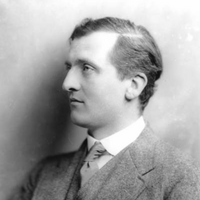
Thomas Ernest Hulme (16 September 1883– 28 September 1917) was an English critic and poet who, through his writings on art, literature and politics, had a notable influence upon modernism. He was an aesthetic philosopher and the 'father of imagism’. Early life Hulme was born at Gratton Hall, Endon, Staffordshire, the son of Thomas and Mary Hulme. He was educated at Newcastle-under-Lyme High School, and from 1902, St John’s College, Cambridge, where he read mathematics, but was sent down in 1904 after rowdy behaviour on Boat Race night. He was thrown out of Cambridge a second time after a scandal involving a Roedean girl. He returned to his studies at University College, London before travelling around Canada and spending time in Brussels acquiring languages. Proto-modernist From about 1907 Hulme became interested in philosophy, translating works by Henri Bergson and sitting in on lectures at Cambridge. He translated Georges Sorel’s Reflections on Violence. The most important influences on his thought were Bergson, who asserted that 'human experience is relative, but religious and ethical values are absolute’ and, later, Wilhelm Worringer (1881–1965), German art historian and critic - in particular his Abstraktion und Einfühlung (Abstraction and Empathy, 1908). Hulme was influenced by Remy de Gourmont’s aristocratic concept of art and his studies of sensibility and style. From 1909 Hulme contributed critical articles to The New Age, edited by A. R. Orage. Hulme developed an interest in poetry and wrote a small number of poems. He was made secretary of the Poets’ Club, attended by such establishment figures as Edmund Gosse and Henry Newbolt. There he encountered Ezra Pound and F. S. Flint. In late 1908 Hulme delivered his paper A Lecture on Modern Poetry to the club. Hulme’s poems Autumn and City Sunset, both published in 1909 in a Poets’ Club anthology, have the distinction of being the first Imagist poems. A further five poems were published in The New Age in 1912 as The Complete Poetical Works of T.E. Hulme. Despite this misleading title, Hulme in fact wrote about 25 poems totalling some 260 lines, of which the majority were possibly written between 1908–1910. Robert Frost met Hulme in 1913 and was influenced by his ideas. The publisher of the book 'Ripostes’ (to which Pound appended the 'complete’ poetical works of T. E. Hulme) spoke in that book of Hulme ‘the meta-physician, who achieves great rhythmical beauty in curious verse-forms.’ In his critical writings Hulme distinguished between Romanticism, a style informed by a belief in the infinite in man and nature, characterised by Hulme as “spilt religion”, and Classicism, a mode of art stressing human finitude, formal restraint, concrete imagery and, in Hulme’s words, “dry hardness”. Similar views were later expressed by T.S. Eliot. Hulme’s ideas had a major effect on Wyndham Lewis (quite literally when they came to blows over Kate Lechmere; Lewis ended the worse for it, hung upside down by the cuffs of his trousers from the railings of Great Ormond Street). He championed the art of Jacob Epstein and David Bomberg, was a friend of Gaudier-Brzeska, and was in on the debut of Lewis’s literary magazine BLAST and vorticism. Hulme’s politics were conservative, and he moved further to the right after 1911 as a result of contact with Pierre Lasserre, who was associated with Action Française. First World War Hulme volunteered as an artilleryman in 1914 and served with the Honourable Artillery Company and later the Royal Marine Artillery in France and Belgium. He kept up his writing for The New Age. Notable publications during this period for that magazine were “War Notes,” written under the pen name “North Staffs”, and “A Notebook”, which contains some of his most organised critical writing. He was wounded in 1916. Back at the front in 1917, he was killed by a shell at Oostduinkerke near Nieuwpoort, in West Flanders. [...] On 28 September 1917, four days after his thirty-fourth birthday, Hulme suffered a direct hit from a large shell which literally blew him to pieces. Apparently absorbed in some thought of his own he had failed to hear it coming and remained standing while those around threw themselves flat on the ground. What was left of him was buried in the Military Cemetery at Koksijde, West-Vlaanderen, in Belgium where—no doubt for want of space—he is described simply as 'One of the War poets’.” Works * Notes on Language and Style (1929, University of Washington Book Store); in The Criterion, Vol. 3, No. 12, (July 1925) (ed. T.S. Eliot) * Speculations: Essays on Humanism and the Philosophy of Art (1936, K. Paul, Trench, Trubner & Co., Ltd.), edited by Herbert Read * Further Speculations of T. E. Hulme (1955, University of Minnesota), edited by Samuel Hynes * The Collected Writings of T. E. Hulme (1996, OUP), edited by Karen Csengeri * Selected Writings of T. E. Hulme (2003, Fyfield Books), edited by Patrick McGuinness Selected poems * Above the Dock * Autumn * A City Sunset * Conversion * The Embankment * Mana Aboda * The Man in the Crow’s Nest * Susan Ann and Immortality * The Poet * A Tall Woman * A Sudden Secret * In the Quiet Land * At Night! * Town Sky-line As translator * Henri Bergson, An Introduction to Metaphysics, (1912) * Georges Sorel, Reflections on Violence, (1915) Articles References Wikipedia—https://en.wikipedia.org/wiki/T._E._Hulme
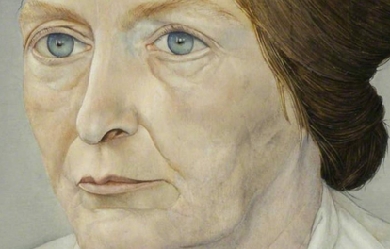
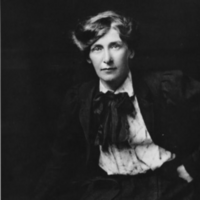
Cicely Mary Hamilton (née Hammill, 15 June 1872– 6 December 1952), was an English actress, writer, journalist, suffragist and feminist, part of the struggle for women’s suffrage in the United Kingdom. She is now best known for the play How the Vote was Won, which sees all of England’s female workers returning to their nearest male relative for financial support.. She is also credited as author of one of the most frequently performed suffrage plays, A Pageant of Great Women (1909), which first put Jane Austen on the stage as one of its “Learned Women.” Biography Cicely Mary Hammill was born in Paddington, London and educated in Malvern, Worcestershire. After a short spell in teaching she acted in a touring company. Then she wrote drama, including feminist themes, and enjoyed a period of success in the commercial theatre. In 1908 she and Bessie Hatton founded the Women Writers’ Suffrage League. This grew to around 400 members, including Ivy Compton-Burnett, Sarah Grand, Violet Hunt, Marie Belloc Lowndes, Alice Meynell, Olive Schreiner, Evelyn Sharp, May Sinclair and Margaret L. Woods. It produced campaigning literature, written by Sinclair amongst others, and recruited many prominent male supporters. Hamilton supplied the lyrics of “The March of the Women”, the song which Ethel Smyth composed in 1910 for the Women’s Social and Political Union. In the days before radio, one effective way to get a message out into society and to have it discussed was to produce short plays that could be performed around the country, and so suffrage drama was born. Elizabeth Robins’s Votes for Women and Cicely Hamilton and Christopher St. John’s How the Vote Was Won are two predominant examples of the genre. Hamilton also wrote A Pageant of Great Women, a highly successful women’s suffrage play based on the ideas of her friend, the theatre director Edith Craig. Hamilton played Woman while Craig played the painter Rosa Bonheur, one of the 50 or so great women in the play. It was produced all over the UK from 1909 until the First World War. Hamilton was a member of Craig’s theatre society, the Pioneer Players. Her play Jack and Jill and a Friend was one of the three plays in the Pioneer Players’ first production in May 1911. During World War I Hamilton initially worked in the organisation of nursing care, and then joined the army as an auxiliary. Later she formed a repertory company to entertain the troops. After the war, she wrote as a freelance journalist, particularly on birth control, and as a playwright for the Birmingham Repertory Company. In 1938 she was given a Civil List pension. Hamilton’s Theodore Savage (1922, vt. Lest Ye Die 1928) is a science-fiction novel about a Britain devastated by a war. In July 2017, the Finborough Theatre staged the first London production of Hamilton’s play 'Just to Get Married’ in over 100 years. It received positive reviews (4 stars) from The Times The Observer The Evening Standard and The New York Times The production was directed by Melissa Dunne and the cast included Tania Amsel, Nicola Blackman, Joanne Ferguson, Lauren Fitzpatrick, Jonny McPherson, Stuart Nunn, Philippa Quinn, Simon Rhodes and Joshua Riley.
.jpg)
That is what this is all about, nothing more, nothing less. My intention and desire is for anyone who has a desire and intention to look beyond this physical world we live in and truly question what is real and what is not. Be it of a spiritual matter or metaphysical science is up to you. As I travel through this journey called life I’m left with one conclusion that I try to hold true to. Love, or as difficult as it may sound, unconditional love. What comes next is truth or better put, absolute truth. Why do I list these two at the top? I humbly believe wholeheartedly that this is the essence of God and hopefully one day the essence of ourselves. Unconditional love & absolute truth. The mind and heart of God as I see it. What a world it would be if only unconditional love could rule this world. Truth, it can be argued over, till time comes to an end. Unconditional love is a very difficult thing to practice, but what a goal to achieve. Maybe in the end, come Judgment Day, love is all the truth that really matters. Believe in what you will, but know this to be true. After all is said & done, what really matters? Material possessions, money, power or even simple self-esteem will all pass away to insignificance. Love lasts forever. Love forgives. Love is our true connection to life & God itself. I’ve heard about all the latest philosophies and religions. If it’s not based in love, unconditional love, it will not last. This is my autobiography put before you. I’ve written it in truth & love. I hope this touches your heart, makes you think deep and causes you to question all that society has put upon you to believe. Then reach your own conclusions. God Bless & Keep you in His love.

The name is, Samantha. The cliche depressed teenage girl, but I am also very much myself. I'm a sixteen year old Junior, at Niangua High School. I've learned love is rough. And if you really love someone you have to suffer a lot. I'm a VERY open minded person. I like to see things from different perspectives before I put my judgement on anything. I take feelings seriously. I have definitely messed up in the past. But as I am getting older, I am trying to make up for those things. I talk A LOT, unless I'm upset, then you won't even know I'm there. I like to write poems, listen to music, and make art. The stuff I write is mostly based on stuff I am currently struggling with, things that are happening in my life, or things that have happen, or that I have struggled with in the past. I take my feedback seriously, so take a few minutes, read my things, and give me some feedback. So, I can fix things, and so I know what to do for the next poems.
I move between two states. Constantly. My dad is in the department of defenses and my mom is a stay at home mom. I am one of four daughters. I am 12 my older sister is 16 and my younger sisters are 4 and 1 1/2. I have one pet named Jaques. I play soccer for FC Garra. I also play basketball, lacrosse, football, and I swim.

Writing was once my favoured passtime. I remember when younger (11-15), my stories took me beyond this realm. Education, plus the fact of work and girls occupied my mind ever increasingly though. The pen alass became less of a friend to me. Hit by a car in London when six I spent alot of time in hospital. When released a wrist deformity, scars, and speech problems were now part of me. But I was lucky, never defeatest, simply alive still! Life with all its ups, and downs continued. I wrote nothing until hospital again interupted. My illness has left me unable to walk. However, My new way of life left me able to wright. My poetry I hope will impact upon all that read it.

I've lived life , married 3 times ,kids and grandchildren already ! I was lucky to have grammar school education in the 70's and Have recently become a lecturer and graduated Works most of my life since 13 ... Phew worn out And now looking to reinvent my life by moving to new Zealand in search of peace and tranquility Join me on my travels Keep in touch maybe As a new life unravels Share my destiny x

How do i deal with my hard past? WRITE How to i confess my love? WRITE How do i show my emotion when i don't know what to say? you guessed it WRITE I am 19 years old My favorite color is pink I'm scared of clowns My weakness is puppies My secret is i still have my baby blanket.. JUDGE ME (: -Jessica Hager
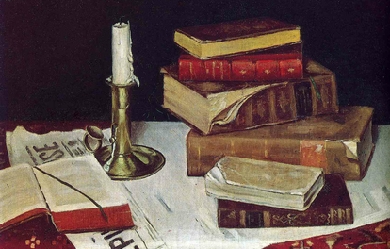
Life, as I see it, is a script. You have the ink and quill to write it, but if the ink spills over, you have to restart the chapter. If the ink starts to drip, the page will tear easily. And when you run out of ink, you are done for the day. Too little of something leaves us empty; too much of something leaves heavy pressure. You just need balance.












